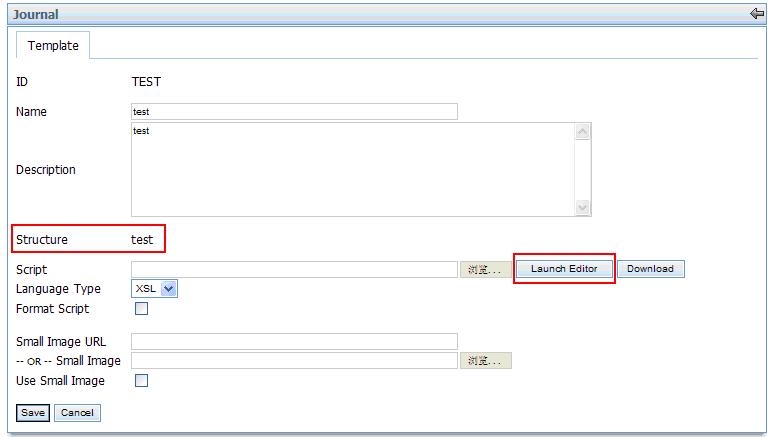So , along comes Struts 2. Be careful - it’s good , but a different beast under the covers from Struts 1. It does a lot of things better - for example , the way it has Actions as normal POJO’s makes it a lot of things easier to unit test.
Struts 2 also gives you Ajax ‘out of the box’. No writing of javascript, no debugging against various browsers; just configure and go. A full description of how to setup Struts 2 to use Ajax is in this wiki article. The quick version is:
1. Setup Struts 2
2. Add the Struts-Ajax URL and Div Tag.
That’s it. Ajax without the fuss.
Even better that the Struts guys have implemented the Ajax functionality using the Prototype Ajax Library, so you get the benefit of all the improvements there.
What do you think? Will you move to Struts 2 just for the new Ajax capabilities?
08/24/2005
These days enterprise Java could almost put you to sleep. How many hundreds of J2EE-EJB web applications have been written that capture information from a web page and store it in a database? What really keeps developers awake at night is trying to write and maintain the complex business logic in their applications. This is a problem not only for new applications, but increasingly, for long-lived, business-critical apps whose internal logic needs to change frequently, often at very short notice.
In an earlier article, "Give Your Business Logic a Framework with Drools," I introduced the Drools framework and showed how it could be used to organize complicated business logic. Drools replaced many tangled if ... then statements with a simple set of things known to be true. If you are ever in a meeting with business customers, and your head hurts with the complexity of what they want you to implement, then maybe you should consider a rule engine such as Drools. This article will show you how you can do this in an enterprise Java application.
Frameworks All the Way Down
Most enterprise Java developers already have their favorite frameworks. In no particular order, these include presentation frameworks (Struts, JSF, Cocoon, and Spring), persistence frameworks (JDO, Hibernate, Cayenne, and Entity Beans) and structural frameworks (EJB, Spring again, Pico, and Excalibur), as well as many others. Each framework does one very useful thing (or more), and gives developers a lot of instant "out of the box" functionality. Deploying an application using frameworks means you avoid a lot of the boring bits and concentrate on what is really needed.
Until now, there was a gap in what the frameworks were able to do, in that business logic had no framework. Tools like EJB and Spring are good, but have little to say about how to organize your if ... then statements! Adding Drools to your developer toolbox means that it is now possible to build an application with "frameworks all the way down." Figure 1 shows a diagram of such an application.

Figure 1. Frameworks for Java applications
This article will build on what we already know of the Drools framework and allow us to build such an application.
When Should I Use a Rule Engine?
It's almost a cliche in software engineering to say that "if you have a hammer, everything looks like a nail." While rule engines can solve a lot of problems for us, it is worth considering whether a rule engine is really appropriate for our enterprise Java application. Some questions to ask are:
- How complex is my application? For applications that shuffle data to and from a database, but not much more, it is probably best not to use a rule engine. However, where there is even a moderate amount of processing implemented in Java, it is worthwhile to consider the use of Drools. This is because most applications develop complexity over time, and Drools will let you cope easily with this.
- What is the lifetime of my application? The answer to this is often "surprisingly long"--remember the mainframe programmers who thought their applications wouldn't be around for the year 2000? Using a rule engine pays off, especially in the medium to long term. As this article demonstrates, even prototypes can benefit from the combination of Drools and agile methods to take the "prototype" into production.
- Will my application need to change? The only sure thing about your requirements is that they will change, either during or just after development. Drools helps you cope with this by specifying the business rule in one or more easy-to-configure XML files.
What About Performance?
If you're writing an enterprise application, chances are that it will need to scale to hundreds, if not thousands, of users. You know that existing Java and J2EE applications can do this, but how will a application using Drools cope with this pressure? The answer is "surprisingly well." While most developers hate to "lose control" and rely on other people's code (i.e., a framework), consider the points below--not only should your application be as fast as "traditional" coding methods, but Drools may even make your application run faster:
- Avoids badly written code: Drools guides developers to do "the right thing." You may be sure the code you are writing is good, but would you say the same for the code of your co-developers? Using a framework makes it easier to write good, fast code.
- Optimized framework: How often have you seen business logic that repeatedly accesses a database for the same information, slowing down the entire application? Used correctly, Drools can remember not only the information, but also the results of previous tests using this information, giving the entire application a speed boost.
- Rete algorithm: Many times we apply "if" conditions that we didn't really need. The Rete algorithm, as implemented by Drools, replaces all of the
if ... thenstatements with an optimized network. It is important to note that the Rete algorithm involves a tradeoff between using more memory to reduce delays at run time. While this isn't a factor in most modern servers, we wouldn't yet recommend deploying Drools on your mobile phone!
Where Were We?
In our previous article, we wrote a simple stock trading application based around the Drools engine. We implemented various business rules, showed how we could rapidly change the rules to meet changing business requirements, and wrote JUnit tests to give us a high degree of confidence that the system would act as it was supposed to. However, the application as we left it had little or no user interface, and used hard-coded data instead of a database. To evolve our application into something that is more enterprise level, we need to add two main things:- Some sort of user interface, ideally based one of the standard web-presentation frameworks.
- A Data Access Object (DAO) to let Drools work with a database (or other back end system).
Calling the Rule Engine from a Presentation Framework
Most enterprise Java applications are accessed using a web interface, and one of the most widely adopted web-presentation frameworks is Struts, from Apache. Ideally, we'll write our application so that the presentation layer knows about the business layer underneath, but not the other way around. This has the advantage not only of allowing us to change the presentation framework at a later date (e.g., to an Ajax or web service interface), but also means the code examples give should be readily applicable to other web frameworks like Spring.
The following code snippet demonstrates how to call the business logic tier (using the rule engine) from the web presentation layer. The code uses the results to decide which page to display. In this sample, we use a Struts action, but the code is similar for any other web framework or even a servlet or a JSP page. This snippet works with a supporting struts-config.xml, JSP pages to post/display data, and a way of generating the WAR file for deployment. The snippet shows how to integrate the rule engine with the web framework.
import javax.servlet.http.HttpServletRequest;
import javax.servlet.http.HttpServletResponse;
import org.apache.struts.action.Action;
import org.apache.struts.action.ActionForm;
import org.apache.struts.action.ActionForward;
import org.apache.struts.action.ActionMapping;
import BusinessLayer;
/**
* Sample Struts action with Pseudocode
*/
public class SampleStrutsAction extends Action{
/**
* Standard Struts doPerfom method
*/
public ActionForward doPerform(
ActionMapping mapping,
ActionForm form,
HttpServletRequest request,
HttpServletResponse response)
throws InvalidEntryPointException {
//Local Variables
StockOffer userOffer =null;
//Get any previous values from the session
userOffer=(StockOffer)request.getSession()
.getAttribute("PREVIOUS_STOCK_OFFER");
//create this object if it is null
if (null==userOffer){
userOffer = new StockOffer();
}
//Update with the incoming values
//These values match those on the form
userOffer.setStockName(request.
getParameterValue("STOCK_NAME"));
userOffer.setStockPrice(request
.getParameterValue("STOCK_PRICE"));
userOffer.setStockQuantity(request
.getParameterValue("STOCK_QTY"));
//Reset the output value
userOffer.setRecommendPurchase(null);
//Call the Business Layer
BusinessLayer
.evaluateStockPurchase(userOffer);
//Forward to the appropriate page
if ("YES".equals(
testOffer.getRecommendPurchase()){
return mapping.findForward("YES_WEB_PAGE");
}
//otherwise default to the no page
return mapping.findForward("NO_WEB_PAGE");
}
}
There are a couple of things going on this sample. Often, we build up the data we need from the user over several web pages, so this sample shows how we can achieve this by retrieving the StockOffer object that we have previously stored in the web server session. Next, we update the StockOffer with any values that the user may have changed on the web page. We then reset the recommendPurchase flag to clear any previous results before we call the business logic layer. Finally, we take the response of the business logic and use it to decide which page to forward the user to.
In this example, note how we split the business logic (yes/no on whether or not to buy a stock) from the presentation logic (decide which page to go to). This allows us to reuse our business rules across several different applications In addition, take look at how the state information (i.e., things that the user has already told us) is stored in the StockOffer object/web server session, and not in the business layer. By keeping the business layer stateless in this way, we make the entire application much more scalable and performant.
Integrating the Rule Engine with the Database Layer
So far, our application has a web presentation layer and a rules engine for the business layer, but no means of getting data to and from a database. This section gives an example of how to do this. We base our example on the Data Access Object (DAO) pattern, where we encapsulate all code that "talks" to the database (or back-end data source) in one pluggable, configurable class. As such, the example is applicable to other persistence frameworks, such as Hibernate and Cayenne.
Some important points about the way we want to organize the data layer are:
- Only the business layer should talk to the data layer; if a class in the presentation layer (front end) wants some data, it should pass through the business layer first. This helps makes our code easier to organize and read.
- As far as possible, we should keep our data layer stateless--we should hold client data elsewhere (e.g., in the server session at the web front end, as per the previous example). This is distinct from caching of data, which we can do at this level. The difference between the two is state information is often user-specific, while data we cache at the data access layer is mainly sharable across the application. Organizing our layer in this way increases performance.
- We should allow the business logic to decide if data is needed or not--if not needed, the call to get the data should not be made.
To implement our simple Data Access Object, we create three new objects: StockNameDao, DaoImplementation, and DaoFactory.
StockNameDao is an interface that defines two methods: getStockNames() returns a list of the stock names that we deal with, and isOnStockList() checks that a given stock is on the list of stocks that we deal with. Our business layer will call these methods as and when it needs the information.
DaoImplementation is an actual implementation of StockNameDao. In this case the values are hard-coded, but we could have queried a database or accessed an information system like Bloomberg via a web service.
DaoFactory is what we use to create an appropriate instance of StockNameDao. The advantage this approach has over creating the class directly is that it allows us to configure what DAO implementation we use at runtime (frameworks like Spring are especially good at this). One factory can return many types of DAOs (e.g., StockNameDao, StockPriceDao, StockHistoryDao), which means we can pass in our DaoFactory, and let the individual rules decide on the data and DAOs that they require.
Here's what the StockNameDao interface looks like:
/**
* Defines a Data Access Object - a non data
* source specific way of obtaining data.
*/
public interface StockNameDao {
/**
* Get a list of stock names for the application
* @return String[] array of stock names
*/
public String [] getStockNames();
/**
* Check if our stock is on the list
* @param stockName
* @return
*/
public boolean isOnStockList(String stockName);
}
And here's the DaoImplementation:
/**
* Concrete Definition of a Data Access Object
*/
public class DaoImplementation
implements StockNameDao {
/**
* Constructor with package level access only
* to encourage use of factory method
*
*/
DaoImplementation(){}
/**
* Get a list of stock names for the app.
* This is a hard coded sample
* normally we would get this from
* a database or other datasource.
* @return String[] array of stock names
*/
public String[] getStockNames() {
String[] stockNames=
{"XYZ","ABC","MEGACORP","SOMEOTHERCOMPANY"};
return stockNames;
}
/**
* Check if our stock is on the list
* @param stockName
* @return true / false as appropriate
*/
public boolean isOnStockList(String stockName){
//Get our list of stocks
String stockList[] = getStockNames();
//Loop and see if our stock is on it
// done this way for clarity . not speed!
for (int a=0; a<stockList.length;a++){
if(stockList[a].equals(stockName)){
return true;
}
}
//Default return value
return false;
}
}
The simple DaoFactory just returns a DaoImplementation:
package net.firstpartners.rp;
/**
* Factory Method to get the Data Access Object.
* Normally we could replace this with a
* framework like Spring or Hibernate
*/
public class DaoFactory {
/**
* Get the stock name Dao
* This sample is hardcoded - in reality
* we would make this configurable / cache
* instances of the Dao as appropriate
* @return an instance of StockNameDao
*/
public static StockNameDao getStockDao(){
return new DaoImplementation();
}
}
Now that we have our simple DAO implementation to serve as our database layer, how do we integrate it with the Drools business layer? The updated business rules file, BusinessLayer.xml, shows us how.
<?xml version="1.0"?>
<rule-set name="BusinessRulesSample"
xmlns="http://drools.org/rules"
xmlns:java="http://drools.org/semantics/java"
xmlns:xs="
http://www.w3.org/2001/XMLSchema-instance"
xs:schemaLocation="
http://drools.org/rules rules.xsd
http://drools.org/semantics/java java.xsd">
<!-- Import the Java Objects that
we refer to in our rules -->
<java:import>
java.lang.Object
</java:import>
<java:import>
java.lang.String
</java:import>
<java:import>
net.firstpartners.rp.StockOffer
</java:import>
<java:import>
net.firstpartners.rp.DaoFactory
</java:import>
<java:import>
net.firstpartners.rp.StockNameDao
</java:import>
<!-- Application Data not associated -->
<!-- with any particular rule -->
<!-- In this case it's our factory -->
<!-- object which gives us back -->
<!-- a handle to whatever Dao (Data -->
<!-- access object) that we need -->
<application-data
identifier="daoFactory">DaoFactory
</application-data>
<!-- A Java (Utility) function -->
<! we reference in our rules -->
<java:functions>
public void printStock(
net.firstpartners.rp.StockOffer stock)
{
System.out.println(
"Name:"+stock.getStockName()
+" Price: "+stock.getStockPrice()
+" BUY:"+stock.getRecommendPurchase());
}
</java:functions>
<!-- Check for XYZ Corp-->
<rule name="XYZCorp" salience="-1">
<!-- Parameters we can pass into-->
<!-- the business rule -->
<parameter identifier="stockOffer">
<class>StockOffer</class>
</parameter">
<!-- Conditions that must be met for -->
<!-- business rule to fire -->
<java:condition>
stockOffer.getStockName().equals("XYZ")
</java:condition>
<java:condition>
stockOffer.getRecommendPurchase() == null
</java:condition>
<java:condition>
stockOffer.getStockPrice() > 10
</java:condition>
<!-- What happens when the business -->
<!-- rule is activated -->
<java:consequence>
stockOffer.setRecommendPurchase(
StockOffer.NO);
printStock(stockOffer);
</java:consequence>
</rule>
<!-- Ensure that negative prices -->
<!-- are not accepted -->
<rule name="Stock Price Not Negative">
<!-- Parameters we can pass into the -->
<!-- business rule -->
<parameter identifier="stockOffer">
<class>StockOffer</class>
</parameter>
<!-- Conditions for rule to fire -->
<java:condition>
stockOffer.getStockPrice() < 0
</java:condition>
<!--When rule is activated then ... -->
<java:consequence>
stockOffer.setRecommendPurchase
(StockOffer.NO);
printStock(stockOffer);
</java:consequence>
</rule>
<!-- Check for Negative Prices-->
<rule name="Stock Price Low Enough">
<!-- Parameters for the rule -->
<parameter identifier="stockOffer">
<class>StockOffer</class>
</parameter>
<!-- Now uses Dao to get stock list -->
<java:condition>
daoFactory.getStockDao().isOnStockList(
stockOffer.getStockName())
</java:condition>
<java:condition>
stockOffer.getRecommendPurchase() == null
</java:condition>
<java:condition>
stockOffer.getStockPrice() < 100
</java:condition>
<!-- When rule is activated do this -->
<java:consequence>
stockOffer.setRecommendPurchase(
StockOffer.YES);
printStock(stockOffer);
</java:consequence>
</rule>
</rule-set>
There are several changes to this file to integrate the data access layer with our business rules:
- At the top of the file, we have several new
<java:import>statements to reference theStockNameDao,DaoImplementation, andDaoFactoryclasses that we added to the system. - We have a new tag,
<application-data>, which assigns an instance of theDaoFactoryclass to a variable.<application-data>tags are similar to parameters, except they apply to all business rules, and not just one. - The
Stock Price Low Enoughrule has a new condition, which uses theDaoFactoryandStockNameDaoto check if the stock is on the list of those that we deal with.
We run our BusinessRulesTest (simulator) again. The simulator/unit tests run OK, since even though we have changed the structure of the program, we haven't (yet) changed what it does. From looking at the output logs, we can see that our business rules are using StockNameDao as part of their evaluations, and that DaoImplementation.isOnStockList() is being called.
While this example shows the reading of information from a data source, the principles are the same for writing information, if that is what a rule has decided should be done. The differences would be that our DAO would have a setSomeInformation() method, and that the method would be called in the <java:consequence> part of the business rule, once the specific conditions had been met.
Summary
In this article, we showed that most Java server applications have three tiers: presentation, business logic, and data persistence. While the use of frameworks is widely accepted in the presentation and persistence layers, until now no framework has been available to encapsulate low-level business logic. As we've seen in the examples, Drools and JSR-94 are ideal candidates for reducing the complexity and speeding the development of Java applications. I hope that these examples inspire you to take a closer look at rule engines, and that they save many hours of development and maintenance time in your applications.
Resources
- Sample code for this article
- Drools Project home page
- Information on Drools rules
- "Introduction to Drools and Rule Engines," by the Drools project lead.
- Drools rules schema files
- JSR-94: Java Rule Engines, Overview
- Struts framework website
- Spring framework website
- Hibernate website
- JUnit test framework
- Jess Java rule engine
- Jena semantic and rule engine
- JSR-94 home page
- Jess in Action home page
- "Business Rule Thinking" (Jess-based)
- General introduction to rule systems
- "Jess implementation of the Rete algorithm"
Paul Browne , based in Dublin, Ireland, has been consulting in enterprise Java with FirstPartners.net for almost seven years.
http://mywicket.group.javaeye.com/group/blog_post/259300
δΗÄψĹφΠ²η≤?/span>
Wicketφ‰·εüΚδΚ?/span>webεΚîγî®φΓÜφûΕγö³ιΪ‰ΨUßγΜ³δΜ”ûΦ¨εÖΕδΗΜηΠ¹γâΙγ²ΙοΦö
* ε€?/span>HTMLε£?/span>javaδΙ΄ι½¥γö³φ‰éΦ΄°εàÜιö?/span>
* OOΨl³δögφ®ΓεΦè
* η΅Σεä®γäΕφĹγ°Γγê?/span>
* ιΪ‰εΚΠγîüδώîε¨?/span>
* δΫéε≠ΠδΙ†φäïεÖ?/span>
* ε±èηîΫServlet APIψÄ?/span>HTTPεçèη°°ΨlÜηä²
* φ½†ι€ÄXMLιÖçγΫ°φ•΅δög
* φ‰™δΚéφû³ιĆεè·ι΅çγî®Ψl³δög
Strutsφ‰·δΜΞModel2 MVC δΗχô™ùφ€§φû³εΜΚγö³webεΚîγî®φΓÜφûΕψIJεÖΕεΖΞδۀ妥γΜïγùÄεΛ³γêÜHTTPη·δh±²γö?/span>actionΨcάLùΞε°¨φàêψIJιÖçΨ|°φ•ΙεΦèι΅΅γî?/span>XMLφ•΅δögψÄ?/span>
δΗ΄φ•΅û°Üε·ΙWicketε£?/span>Strutsε€®δΫ™ΨpÖRÄ?/span>HTTPη·δh±²εΛ³γêÜψÄ?/span>Servlet APIε£?/span>HTTPεçèη°°φäΫεè•ψĹγäΕφĹγ°ΓγêÜψĹιÖçΨ|°ηΩôεÖ≠φ•ΙιùΔηΩ¦ηΓ¨φ·îηΨÉψÄ?/span>
δΚ¨ψĹφ·îηΨÉ㧧δΗÄφ•öwùΔεQöδΫ™Ψp?/span>
StrutsδΫ™γ≥ΜεüόZΚéηßΘι΅äφ·èδΗΣHTTPη·δh±²ρqΕεΑÜεÖΕε°öεêëεàΑφüêδΗΣεΛ³γêÜη·Ξγ±Μεû΄η·Ζφ±²γö³φ¨΅ε°öActionΨcÖRIJφ·èδΗ?/span>ActionΨc’dΑÜεΛ³γêÜεêéγö³Ψl™φû€‰qîε¦ûεQ¨εΤàεܦ_°öδΗ΄δΗÄφ≠ΞηΒΑεêëβÄîβÄîιÄöηΩ΅ηΫ§εèëφà•ηÄÖι΅çε°öεêëεàΑεèΠδΗÄδΗ?/span>Actionφà•ηÄÖεΑÜφéßεàΕφùÉδΚΛΨlôηΨ™ε΅?/span>HTMLγö?/span>JSPôεΒιùΔψIJδΜéφäÄφ€·ηΨÉεΛßφùΞη°‘¨Φ¨ηôΫγ³Εφ·èδΗΣιÉ®εàÜδΙ΄ι½¥ε¹öεàΑδΚÜεΨàεΞΫγö³ηßΘηÄΠοΦ¨δΫÜφ‰·εüόZΚéHTTPη·δh±²γö³εΛ³γêÜφ®ΓεΦèεè·ηΑ™δΗéφ½ΕδΜΘδΗçγ§ΠεQàδΗéwicketγ¦Ηφ·îû°±φ‰·‰q΅φ½ΕδΚÜοΦâψIJδΗΛεΛßεéü妆εΠ²δΗ΄οΦö
* StrutsρqΕδΗçφ‰·γ€üφ≠Θφ³èδΙâδΗäγö³γΚ·Ψ_öwùΔεêëε·Ιη±ΓοΦ¨φ·èδΗΣActionΨc’d°öδΙâδΚÜδΗÄδΗ?/span>abstractionεQàφäΫεè•οΦâεQ¨δΫÜφ‰?/span>abstractionφ‰·γî±HTTPεçèη°°γö³η·Ζφ±²φ€ΚεàΕεÜ≥ε°öγö³εQ¨ηĨεΤàιùûιùΔεêëε·Ιη±Γγö³εàÜφûêψÄ?/span>
* ιôΛιùûφàëδΜ§ε€?/span>javaδΜΘγ†¹δΗ≠㦥φéΞηΨ™ε΅?/span>HTMLεQàεΫ™γ³âôôΛιùûφàëδΜ§γ•·δΚÜοΦâεQ¨ι²ΘδΙàδΊ™δΚÜηΨ™ε΅?/span>HTMLφàëδΜ§û°όpΠ¹ε≠ΠδΙ†εèΠεΛ•γö³δΗΜ΄Ι¹φäÄφ€·οΦ¨φ·îεΠ²JSP壨η΅Σε°öδΙâtagψÄ²δ΄…γî®ε€®JSPδΗ≠δ΄…γî?/span>tagρqâôùûφ‰™δΚ΄εQ¨εΑΛεÖΕφ‰·εΫ™φàëδΜ§φää‰qôιΓΙεΖΞδΫ€δΚΛγΜôΨüéεΖΞû°èγΜ³φ½”ûΦ¨‰qôδΦö㦥φéΞε·ΤD΅¥δΗΛδΗΣΨl™φû€εQ?/span>JSPδΜΘγ†¹ηΔΪδΜ•δΚόZΫ€γö³δΗÄφ≤™γ≥äφΕ²οΦ¨φà•ηÄÖφ‰·φàëδΜ§η΅ΣεΖ±ε°¨φàê‰qôιΓΙδΜ’däΓψÄ?/span>
ηÄ?/span>Wicketγö³εΛ³γêÜφ•ΙεΦèεàôδΗçεê¨εQ¨δΜéφï¥δΫ™φùΞη°≤εΚîη·Ξη·¥φ‰·φ¦¥εä†δΦ‰ι¦ÖδΚ¦ψIJε°Éι΅΅γî®ιùΔεêëε·Ιη±Γγö³γΜ³δΜΕφäÄφ€·ε°ûγé?/span>webδΗéγî®φàοLö³δΚΛδΚ£εQàηΩô㲓é(gu®©)€âδΚ¦εΠ²SwingεQâψÄ²ε€®WicketδΗ≠γö³φ·èδΗÄôεâ|‰·γîόp΄Ξρq≤γö³δΫΩγî®Ψl³εêàη°Ψη°Γφ®ΓφùΩγîüφàêγö³γΜ³δΜΕφû³φàêψIJιΓΒιùΔ壨Ψl³δögεê³η΅ΣφΗ≤φü™η΅ΣεΖ±εQ¨εΤà㦥φéΞφà•ηÄÖι½¥φéΞγö³δΗ?/span>markupφ•΅δögεQàφ†΅η·Üφ•΅δΜ”ûΦ¨εΫΔεΦèû°±εÉèJSPεQâεÖ≥η¹îψIJεΫ™HTTPη·δh±²εàΑφùΞφ½”ûΦ¨‰qôδΚ¦η·δh±²ηΔΪηù{φçΔψĹδΦ†ιÄ£εàΑΨl³δögδΗäγö³γ¦ΗεΚîδΚ΄δögδΗ≠φùΞεQ¨ηΩôδΗÄγ²ΙδΗéεΨ°η Yγö?/span>VSεΨàγ¦Ηη±ΓψIJφâÄδΜ?/span>WicketηÉΫεΛüηßΘεÜ≥strutsδΫ™γ≥ΜδΗ≠ε≠‰ε€®γö³ι½°ιΔ‰εQ?/span>
* Wicketφ‰·ε°¨εÖ®ιùΔεêëε·Ιη±Γγö³ψIJφàëδΜ§εè·δΜΞεà©γî®γΜ³δΜΕγö³ΨlßφâΩφÄßη°Ψη°Γη΅ΣεΖόqö³εΚîγî®ψIJηΩô顨δΗçι€ÄηΠ¹δΊ™εΛ³γêÜHTTPεçèη°°γö³η·Ζφ±?/span>/ε™çεΚîηĨδΫ€δΜ÷MΫïεΖΞδΫ€ψÄ?/span>
* WicketφâÄδΫΩγî®γö?/span>markupφ•΅δögδΗéγΚ·Ψ_Ιγö³HTMLεΨàφéΞ‰qëοΦ¨φâÄδΜΞε°Ιφ‰™δΗäφâ΄δ΄…γî®ψÄ?/span>Wicketε€?/span>markupφ•΅δögδΗ≠φâÄεΦïεÖΞγö³εÜÖε°öwùûεΗΗφï¥΄z¹οΦ¨ρqΕγ§Πεê?/span>XHTMLφ†΅ε΅ÜψIJδ™QδΫïδΚÜηß?/span>HTMLγö³εΦÄεèëηÄÖιÉΫεè·δΜΞεΠ²γΦ•ηΨ?/span>HTMLφ•΅δögι²Θφ†ΖΨ~•ηΨëWicketγö?/span>markupφ•΅δögεQ¨εΑ±εΞΫδΦΦδΜ•εΤàδΗçγüΞι¹™ηΩôφ‰?/span>Wicketγö?/span>markupφ•΅δögδΗÄφ†½ςÄ?/span>
δΗâψÄ?/span>HTTPη·δh±²εΛ³γêÜ
ε€?/span>StrutsδΗ≠οΦ¨δΗÄδΗ?/span>HTTPη·δh±²ηΔΪφéΞφîΕεêéεQ?/span>Strutsû°Üε€®ιÖçγΫ°φ•΅δögδΗ≠φüΞφâ?/span>request path壨γ¦ΗεΚîγö³ActionΨcÖRIJεΠ²φû€ηΩôδΚ¦εΖ≤ΨlèηΔΪιÖçγΫ°εΞΫδΚÜεQ¨ε°É?y®≠u)°ÜεΑÜφèêεè•η·δh±²εè²φïΑφîë÷ÖΞεà?/span>ActionForm beanδΗ≠οΦ¨ρqΕφâßηΓ¨δΗÄδΚ¦ιΣ¨η·¹ψIJγ³Εεê?/span>HTTPη·δh±²ψĹε¦ûεΚî壨ActionFormε·Ιη±ΓιÉΫεΑÜδΫ€δΊ™εè²φïΑδΦ†εÖΞεà?/span>ActionΨc÷MΗ≠ψIJδΜé‰qôγ²Ιεè·δΜΞ〴ε΅ΚActionγö³εΦÄεèëηÄÖφé¨φèΓγùÄεΚîγî®γö³φ•Ιφ•öwùΔιùΔοΦöδΜ•δΜ§εΩÖιΓΜεΛ³γêÜHTTP sessionεQ¨γΜ¥φä?/span>HTTPη·δh±²ε£?/span>sessionγö³ε±ûφÄßοΦ¨ρqΕε€®actionφâßηΓ¨ε°¨φ½ΕεΜΚγΪ΄ι€ÄηΠ¹ηΩîε¦ûγö³δΩΓφ¹·εQ¨φ€ÄεêéηΩ‰ηΠ¹ηΩîε¦ûγ¦ΗεΚîγö³ActionForwardδΜΞδ΄…strutsγüΞι¹™δΗ΄δΗÄφ≠Ξε€®ε™Σ顨ψÄ²ε¹΅εΠ²φ≠Λφ½?/span>ActionForwardû°ÜφéßεàΕφùÉδΚΛγΜôδΚ?/span>JSPôεΒιùΔεQ¨εΦÄεèëηÄÖεΑ±ηΠ¹δ΄…γî?/span>strutsη΅Σε°öδΙâγö³tagεΚ™γΦ•εÜ?/span>JSPδΜΘγ†¹ψIJεΠ²φ≠ΛγΙ¹εΛçγö³εΖΞδΫ€γé·ηä²εΨàε°Ιφ‰™ε΅ΚγéΑιîôη··οΦ¨ηĨδΗîstruts‰q‰ι€ÄηΠ¹δΗâδΗΣδΫçΨ|°δΩùφ¨¹δΗÄη΅Ώ_Φöstruts XMLιÖçγΫ°φ•΅δögψÄ?/span>java ActionΨcÖRÄ?/span>JSPη΅Σε°öδΙ?/span>tagψÄ?/span>
ηÄ¨ε€®WicketδΗ≠οΦ¨δΗÄδΗ?/span>HTTPη·δh±²ηΔΪφéΞφîΕεêéεQ?/span>Wicketû°ÜγΓ°η°?/span>HTTPφâÄη·δh±²γö³ι²ΘδΗΣιΓΒιùΔ壨倮ηΩôδΗΣιΓΒιùΔεÖ≥η¹îγö³Ψl³δögψIJεΠ²φû€η·Ζφ±²γö³γ¦°γö³φ‰?/span>formεQ?/span>Wicketû°Üη΅Σεä®φèêεè•η·Ζφ±²εè²φïΑψĹιΣ¨η·¹εè²φïΑψĹηΩ¦ηΓ¨δΗÄδΚ¦ιΔ³εÖàηß³ε°öεΞΫγö³γ±Μεû΄ηù{φçΔψĹη°ΨΨ|?/span>formΨl³δögδΗ≠γö³modelεQàφ®ΓεΦèοΦ¨‰qô顨γî®φ≥ïδΗ?/span>MVCδΗ≠γ±ΜδΦϊ|Φ¨δΫÜφ€âδΗçεê¨εQâεÄϊ|Φ¦φéΞγùÄηۧ娕η·δh±²δΗΚγ¦ΗεΚîγ±Μεû΄γö³δΚ΄δögψĹηΑÉγî®γ¦°φ†΅γΜ³δΜΕδΗäγö³γ¦ΗεΚîδΚ΄δΜΕδΨΠεê§εô®εQ¨ηΩôφ†ΖεΑ±δΦöε·Φη΅¥δΚ΄δΜΕεΛ³γêÜδΜΘγ†¹ηΩêηΓ¨φùΞφâßηΓ¨δΗöεäΓιÄΜηΨëεQ¦γ³ΕεêéοΦ¨δΚ΄δögεΛ³γêÜεô®ηΩ‰û°Üφ¨΅ε°öδΗ΄δΗÄφ≠ΞιΓΒιùΔγö³δΫçγΫ°εQ¨ηΔΪφ¨΅ε°öγö³ιΓΒιùΔεΑÜεàùεß΄ε¨•οΦàεΠ²φû€ôεΒιùΔδΜéφ€ΣηΔΪεàùεß΄ε¨•γö³η·ùεQâεΤàη΅Σεä®φΗ≤φü™εQ¦φΗ≤φü™εΛ³γêÜεΑÜφ¨âγÖßôεΚεΚèη°âK½°φ·èδΗΣôεΒιùΔΨl³δögεQ¨ηΠ¹φ±²ε°ÉδΜ§ηΩ¦ηΓ¨η΅ΣφàëφΗ≤φü™ψÄ²ε€®markupφ•΅δögδΗ≠ηÉΫεΛüγΜ³δΜΕδΜÖιÄöηΩ΅εêçε≠½δΗ?/span>HTMLεÖÉ㥆‰q¦ηΓ¨φ‰†εΑ³ψÄ?/span>
Wicketε΅χôâ≤γö³εéü妆οΦö
* φ·èδΗΣΨl³δögγüΞι¹™εΠ²δΫïεΛ³γêÜη΅ΣεΖ±δΚ΄δögψÄ²ε¦†φ≠ΛφàëδΜ§εèΣι€ÄηΠ¹εΑÜΨl³δögφîë÷àΑôεΒιùΔδΗäοΦ¨Ψ~•εÜôδΚ΄δögεΛ³γêÜεô®εΑ±ηΓ¨δΚÜψIJεΠ²φû€δΗÄδΗΣιΓΒιùΔδΗ≠ε≠‰ε€®20δΗΣηÉΫεΦïεèëδΚ΄δögγö³δΗçεê¨γö³Ψl³δögεQ¨φàëδΜ§ιôΛδΚÜηΩ¦ηΓ¨εΑÜε°ÉδΜ§φΖ’dä†εàΑιΓΒιùΔδΗäγö³εΖΞδΫ€εΛ•φ≤Γφ€âεàΪγö³εΖΞδΫ€ψIJδΫÜεΠ²φû€ε€?/span>strutsδΗ≠οΦ¨φàëδΜ§εè·ηÉΫι€ÄηΠ¹εΨèγΪ?/span>20δΗΣδΗçεê¨γö³ActionΨcάLà•ηÄÖδΗÄδΗΣεÖΖφ€?/span>20δΗΣεàÜφî·η·≠εèΞγö³ActionΨcΜοΦ¨ρqΕηΠ¹ε€?/span>XMLιÖçγΫ°δΗ≠ιÄêδΗÄφΖ’dä†ψÄ?/span>
* WicketεΗΠγΜôδΚÜφàëδΜ§ηÄÉηôëΨl³δög/δΚ΄δögι΅çγî®γö³φ€ΚδΦöψIJηĨδΗçγî®εΑÜφ≥®φ³èεä¦φîΨεàΑεΠ²δΫïεΛ³γê?/span>HTTPη·δh±²ε£¨ε¦ûεΚîδΗäψÄ?/span>
* δΗ?/span>strutsγ¦Ηφ·îδΫΩγî®WicketδΦöιôçδΫéφàëδΜ§γö³δΜΘγ†¹ι΅èοΦ¨‰qôφ≠Θφ‰·ι΅çγî®γΜ³δΜΕεΗΠφùΞγö³γ¦äεΛ³ψÄ?/span>Wicketφ€§ημnδΗçδ΄…γî®δ™QδΫïγö³XMLιÖçγΫ°φ•΅δögψIJεèΣι€ÄηΠ¹δΩ°φî?/span>webε°Ιεô®γö?/span>web.xmlφ•΅δögδΗ≠γö³servletεΘΑφ‰éιÉ®εàÜψÄ?/span>
ε¹΅εΠ²φàëδΜ§φ¦³ΓΜèΨ~•εÜô‰q?/span>Windows APIψĹεΤàγî®ηΩ΅Visual Basicφà•ηÄ?/span>Borland Delphiγö³η·ùεQ¨δΗ΄ιùΔγö³φ·îηΨÉδΦöφ¦¥εä†η°©δΚΚεçΑη±ΓφΖ±εàÖRÄ²δ΄…γî?/span>strutsεΦÄεèëεΑ±εÉèδ΄…γî?/span>Windows APIδΗÄφ†χPΦöφéΞφîΕεéüεß΄φΕàφ¹·εQ¨ηßΘγ†¹εéüεß΄φΕàφ¹·οΦ¨γ³ΕεêéεÜçεΛ³γêÜηΩôδΚ¦φΕàφ¹·ψIJγî±δΚ?/span>Windows APIφ‰·εüΚδΚéφΕàφ¹·εσ@γé·εΖΞδΫ€γö³εQ¨φâÄδΜΞγ≥ΜΨlüιôΛδΚÜφΕàφ¹·ε¦ûεΚîεΛ•δΗçφ€üφ€¦δ™QδΫïγö³‰qîε¦ûεÄΙ{Ä?/span>
δΜéεèΠδΗÄφ•öwùΔ〴οΦ¨Dephiε€?/span>TApplicationΨc÷MΗ≠ιöêη½èδΚ?/span>WindowsφΕàφ¹·εΨΣγé·εQ¨δ΄…εΦÄεèëδùhεë‰ε¦¥ΨlïγùÄTApplicationΨc’dΨèγΪ΄εÖΕδΜ•γö³ΨcÖRIJεéüεß΄γö³Ψp»ùΜüφΕàφ¹·û°όpΩôφ†·²ΔΪDephiεÜÖεΨèΨcάLéΞφî”ûΦ¨ηΔΪεÜÖεΜΚγ±ΜηßΘφûêρqΕηΔΪΦ΄°ε°öεÖΕφéΞΨU¨ôÄÖψIJφΕàφ¹·ηΔΪηΫ§φçΔδΗόZΗÄδΗΣδΚ΄δΜ”ûΦ¨ρqΕηΔΪδΦ†ιĹεàΑφüêδΗΣγâΙε°öγö³ε·Ιη±ΓψÄ?/span>
εΠ?/span>WindowsεΚîγî®ΫE΄εΚèδΗÄφ†χPΦ¨WicketεΚîγî®δΙüεÖΖφ€âφ€çεäΓδΚéφ•΅φ€§ε£?/span>HTMLφ®ΓφùΩγö³ηΒ³φΚêφ•΅δΜΕψIJδΜé‰qôγ²Ι〴οΦ¨Wicketη±Γγî®Delphiε¹öφΓ¨ιùΔεΦÄεèëδΗÄφ†·²ΔΪγî®φùΞε¹?/span>webεΦÄεèëψÄ?/span>
妦ψÄ?/span>Servlet APIε£?/span>HTTPεçèη°°γö³φäΫεè?/span>
Strutsφ≤Γφ€âιöêη½èServlet APIε£?/span>HTTPεçèη°°γö³γΜÜηä²ψÄ²δΊ™δΚÜδ΄…γî?/span>StrutsεQ¨φàëδΜ§εΩÖôε÷MΙêδΚé壨HTTPServletRequestψÄ?/span>HttpServletResponse ε£?/span>HttpSessionΨcάLâ™δΚΛι¹™ψIJεΤà妥γΜïγùÄη·δh±²ε£¨ε¦ûεΚîεΨèγΪ΄εΚîγî®ψIJηΩôδΨΩφ‰·φâÄφ€?/span>Model2 MVC wenφΓÜφûΕδΗéγîüδΩ±φùΞγö³εΦ±γ²èVÄ?/span>
φ≠ΘεΠ²δΗäιùΔη·¥γö³εQ?/span>Wicketιöêη½èδΚ?/span>Servlet APIε£?/span>HTTPεçèη°°γö³γΜÜηä²ψIJε·ΙδΚéδΗÄδΚ¦εΚîγî®οΦ¨φàëδΜ§γîöη΅≥ηßΠεèäδΗçεàΑ‰qôδΚ¦ΨlÜηä²ψIJγîö硦_·ΙδΚéιùûεΗΗεΛçφù²γö³εΚîγî®εQ¨φàëδΜ§δΙüδΜÖδ΄…γî®ιIJεΫ™γö?/span>Wicketεçèη°°φäΫεè•ΨcÖRIJηĨγΜèεΗΗγî®εàΑγö³φ‰?/span>javaΨl³δögΨcÖRÄ?/span>POJOδΗöεäΓφ®Γεû΄ψĹγΚ·HTMLφ†΅η°Αφ•΅δögψÄ?/span>
δΚîψĹγäΕφĹγ°Γγê?/span>
δΫΩγî®StrutsεΦÄεèëοΦ¨φàëδΜ§û°ÜηéΖεΨ½εÖ®ιÉ®γö³γäΕφĹγ°ΓγêÜφùÉψIJηΩôε·ΙδΚéεΜΚγΪ΄εΛßηß³φ®Γγö³ψĹιΪ‰εç΅γώîΫIΚι½¥γö³ψĹι¦ÜΨüΛεΚîγî®φùΞη°≤φ‰·εΨàεΞΫγö³ο֨妆亙φàëδΜ§û°ÜηéΖεΨ½ε·ΙHttpSessionδΗäφ·èδΜΕδΚ΄γâ©γö³φéßεàΕφùÉψIJδΫÜφ‰·ε·ΙδΚéδΗ≠û°èεû΄εΚîγî®εQ¨φàëδΜ§εΑÜφ≤Γφ€âΨ~‰γî±Ψ~•εÜôδΗÄδΚ¦ιΔùεΛ•γö³δΜΘγ†¹ψIJηΩôφ†ΖεΑÜε·ΤD΅¥εΚîγî®εè‰εΨ½εΛçφù²ε£¨γΦ•εÜôη¥Ιφ½ΕψÄ?/span>
ε€®γäΕφĹγ°ΓγêÜδΗäεQ?/span>Wicketεè·δΜΞδΫ€δΊ™δΗÄδΗΣδΗçιîôγö³ιÄâφ΄©ψÄ?/span>WicketφΓÜφûΕιΜ‰η°ΛδΜΘγ°ΓφâÄφ€âγö³Ψl³δögγäΕφĹψIJηΩôε·ΙδΚéδΗ≠εΑèεû΄εΚîγî®οΦ¨ε€®γäΕφĹγ°ΓγêÜδΗäγö³δΜΘγ†¹ι΅è塆δΙéδΗ?/span>0ψIJδΫÜφ‰?/span>WicketδΙüφèêδΨ¦δΚÜδΗÄδΚ?/span>APIδΫΩφàëδΜ§ηΩ¦ηΓ¨φ†΅ε΅ÜγäΕφĹγ°ΓγêÜ壨ε°ûγéΑη΅ΣεΖ±γö³γäΕφĹγ°ΓγêÜψIJηΩôφ†χPΦ¨εç≥δ΄…φ‰·εΛßεû΄εΚîγî®οΦ¨φàëδΜ§δΙüηÉΫεΛüεÖ®φùÉφé¨φèΓγäΕφĹγ°ΓγêÜψIJδΚ΄ε°ûδΗäεQ¨εç≥δΫΩε€®δΫΩγî®WicketΨ~•εÜôεΛßεû΄εΚîγî®φ½”ûΦ¨ιÄöεΗΗδΙüφ‰·εÖàη°©WicketδΜΘγ°ΓφâÄφ€âγö³γäΕφĹοΦ¨γ³ΕεêéεÜçφÖΔφÖΔγö³ε°ûγéΑη΅ΣεΖ±ε°öδΙâγö³γäΕφĹγ°ΓγêÜδΜΞφèêιΪ‰εΚîγî®φÄßηÉΫψÄ?/span>
εÖ≠ψĹιÖçΨ|?/span>
δΗçη®Äη΅Σφ‰éεQ?/span>Strutsι€ÄηΠ¹δΗÄδΗ?/span>XMLφ•΅δögεQöε°öδΙâε·ΙHTTPη·δh±²ε£¨ε™çεΚîγö³φ‰†εΑ³ε£¨φâÄφ€âγö³ActionFormε·Ιη±ΓΫ{âψIJηΩôδΗΣφ•΅δΜΕεè·ηÉΫιùûεΗΗεΛßηĨδΗîεΛçφù²ψIJηĨφ•Αγâàφ€§γö?/span>StrutsφèêδΨ¦δΚÜεΑ܉qôδΗΣφ•΅δögεàÜηßΘδΗΚεΛöδΗΣφ®Γεù½γö³φ•“é(gu®©)≥ïεQ¨ηôΫγ³ΕηΩôφ†Ζεè·δΜΞεΑÜφ®Γεù½εàÜγ±ΜεQ¨δΫÜφ‰·ηΩôφ†Ζεê¨φ†·²Π¹Ψl¥φäΛη°ΗεΛöγö³εΑèφ•΅δögψÄ?/span>
WicketδΗçι€ÄηΠ¹ιÖçΨ|°φ•΅δΜΕψÄ?/span>WicketιÄöηΩ΅δΗÄδΗΣγ°Äεçïγö³εΚîγî®ιÖçγΫ°ΨcάLà•ηÄÖιÄöηΩ΅Ψ~•εÜôwebε°Ιεô®γö?/span>web.xmlφ•΅δögδΗ?/span>Servlet initεè²φïΑφùΞε°¨φàêγ®΄εΚèγö³εàùεß΄ε¨•ψIJηÄ?/span>HTTPη·δh±²εàΑγΜ³δΜΕδΚ΄δΜΕγö³φ‰†εΑ³ψĹγΜ³δΜΕεΠ²δΫïηΨ™ε΅?/span>HTMLΫ{âηΔΪε¨ÖεêΪε€®δΚÜWicketγö³εΚîγî®ιÄΜηΨë顨οΦ¨δΜéηĨφû¹εΛßε€ΑΫéÄ娕δΚÜιÖçγΫ°ψÄ?/span>
δΗÉψĹεè²ηÄÉηΒ³φ•?/span>
http://wicket.sourceforge.net/
http://www.wicket-wiki.org.uk/wiki/index.php/Newuserguide
http://www.tkk7.com/tommyjian/archive/2007/06/10/123202.html
φ³üηΑΔTommy Jian
δΗόZΜÄδΙàφ‰·WicketεQ?/span>
εΠ²φû€φ²(zh®®n)®φ≠Θε€®ε·Μφ±²δ΄…γî?/span>JavaεΦÄεè?/span>WebεΚîγî®ΫE΄εΚèεQ¨γ¦°εâçοΦ¨φ²(zh®®n)®φ€âεΨàεΛöγö³ιÄâφ΄©ψIJε°ûιôÖδΗäεQ¨ε≠‰ε€®εΠ²φ≠ΛδΦ½εΛöγö³WebεΚîγî®ΫE΄εΚèφΓÜφûΕφ‰ë÷Ψ½φ€âγ²Ιφêûγ§ëψIJφùΞη΅ΣδΚéδΚ£η¹îΨ|ëδΗÄδΗΣεçöε°ΔγΪôγ²Ιγö³ι½°ιΔ‰εQöφ?zh®®n)®ηÉΫη·¥ε΅ΚεΛöû?/span>Java WebεΚîγî®φΓÜφûΕγö³εêçε≠½οΦüδΜ•δΜ§ε±ïγéΑγö³γΜ™φû€εΠ²δΗ΄οΦö
φΓÜφûΕεQ¨εàΑεΛ³ιÉΫφ‰·φΓÜφû”ûΦ¨εè²γ€΄εêéιùΔιô³εΗΠγö³ηΓ®φ†Ι{Ä?/span>
δΗόZΜÄδΙàηΠ¹“ι΅çφ•Αεèëφ‰éηΫ°ε≠ê”εQ?/span>
δΜéηΩôδΗΣηߣεΚΠ〴εQ¨φ?zh®®n)®ε·ΙδΚ?/span>“εèΠδΗÄδΗ?/span>WebεΚîγî®ΫE΄εΚèφΓÜφûΕφ€âεΛöεΞ?/span>”‰qôδΗΣι½°ιΔ‰φÄάL‰·ηÄΩηÄΩδΚéφÄÄεQüγΓ°ε°ûοΦ¨δΗόZΜÄδΜ§ηΠ¹“ι΅çφ•Αεèëφ‰éηΫ°ε≠ê”εëΔοΦüε·ΙηΩôδΗΣεèΛηĹγö³ηΑöη·≠γö³γ≠îεΛçφ‰·εQö妆δΗχôΩôδΗÄ΄ΤΓεè·δΜΞδ΄…ηΫ°ε≠êφ¦¥ε€ÜεQ?/span>
δΫÜφ‰·ε·ΙδΚéιΪ‰η¥®ι΅èγö³φ€üεΨÖρqΕδΗçφ‰·φû³εΜ?/span>WicketφΓÜφûΕγö³εî·δΗÄεä®ε¦†ψIJγîöη΅œx€âεΨàεΛöγö³ηß²γ²ΙοΦ¨η°ΛδΊ™φ≤Γφ€âεÖΕδΜ•γö?/span>WebεΖΞεÖΖι¦ÜεΓΪηΓΞηΩôδΗÄΫIΚγôΫεQ¨ηÄ?/span>Wicketε¹öεàΑδΚÜψIJε°ûιôÖδΗäεQ?/span>WicketδΗéδΗäιùΔφèêεèäγö³δΦ½εΛöφΓÜφûΕδΗçεΛΣδΗÄφ†½ςÄ?/span>
δΗ?/span>Wicketφ€Äγ¦ΗηΩëγö³φà•η°Ηφ‰·Tapestryε£?/span>EchoεQ¨δΫÜφ‰·ηΩôΩUçγ¦ΗδΦΦφÄßδΙüεΨàφ€âιôêψÄ²ε£¨TapestryδΗÄφ†χPΦ¨WicketδΫΩγî®γâΙε°öγö?/span>HTMLε±ûφÄßφùΞφ†΅η·ÜΨl³δögεQ?/span>ComponentsεQâεΘΑφ‰éοΦ¨‰qôεè·δΜΞφ•ΙδΨΩδ΄…γî®δΗÄηà§γö³HTMLΨ~•ηΨëεô®ηΩ¦ηΓ¨φ•΅δΜΕγΦ•ηΨëψÄ²ε£¨EchoδΗÄφ†χPΦ¨Wicketφ΄Ξφ€âδΗÄ΄Ι¹γö³Ψl³δögφ®Γεû΄ψIJδΫÜφ‰·εüΚδΚ?/span>Wicketγö³εΚîγî®γ®΄εΚè壨ι²ΘδΚ¦εüόZΚéTapestryε£?/span>Echoγö³εΚîγî®γ®΄εΚèδΗçδΗÄφ†χPΦ¨‰qôφ‰·ε¦†δΊ™δΜ?/span>WicketφΓÜφûΕδΗ≠δΗΛφ•öwùΔιÉΫεè·δΜΞεè½γ¦äψIJφ?zh®®n)®ηéΖεΨ½δΚÜδΗÄ΄Ι¹γö³Ψl³δögφ®Γεû΄ε£¨ε·ΙHTMLφ≤Γφ€âρq≤φâΑφâÄεΗΠφùΞγö³γ¦äεΛ³ψÄ²ε€®εΨàεΛöφÉÖεÜΒδΗ΄οΦ¨‰qôγßçεΛçεêàγö³εΞΫεΛ³εè·δΜΞεΗΠφùΞιùûεΗîR΅çηΠ¹γö³εΦÄεèëδΦ‰εä―ùÄ?/span>
γêÜηßΘδΚÜφû³εΜ?/span>Wicketγö³εä®φ€Κφ€âεä©δΚéφ²(zh®®n)®γêÜηßΘδΊ™δΜÄδΙ?/span>WicketδΦöηΓ®γéΑγö³δΗçδΗÄφ†½ςÄ?/span>
|
Echo |
Cocoon |
Millstone |
OXF |
|
Struts |
SOFIA |
Tapestry |
WebWork |
|
RIFE |
Spring MVC |
Canyamo |
Maverick |
|
JPublish |
JATO |
Folium |
Jucas |
|
Verge |
Niggle |
Bishop |
Barracuda |
|
Action Framework |
Shocks |
TeaServlet |
wingS |
|
Expresso |
Bento |
jStatemachine |
jZonic |
|
OpenEmcee |
Turbine |
Scope |
Warfare |
|
JMAA |
Jaffa |
Jacquard |
Macaw |
|
Smile |
MyFaces |
Chiba |
JBanana |
|
Jeenius |
JWarp |
Genie |
Melati |
|
Dovetail |
Cameleon |
JFormular |
Xoplon |
|
Japple |
Helma |
Dinamica |
WebOnSwing |
|
Nacho |
Cassandra |
Baritus |
εä®φ€Κ
γ¦°εâçε≠‰ε€®γö³εΛßεΛöφïΑWebφΓÜφûΕε·ΙδΚéφ€çεäΓγΪ·γö³γäΕφĹγ°ΓγêÜιÉΫδΜÖδΜÖφèêδΨ¦δΚÜηΨÉεΦόqö³φî·φ¨¹ψÄ?/span>
‰qôεΑ±φ³èεë≥γùÄε€?/span>WebεΚîγî®ΫE΄εΚèδΗ≠ε≠‰ε€®γùÄεΨàεΛöγâ“é(gu®©)°äγö³δΜΘγ†¹φùΞεΛ³γêÜ壨γΜ¥φäΛγΙ¹εΛçγö³γäΕφĹγ°ΓγêÜφ€ΚεàΕψIJηôΫγ³?/span>WicketρqΕδΗçεÖ¹η°Ηε·“é(gu®©)€çεäΓγΪ·γö³γäΕφÄ¹ε°¨εÖ®δΗçηÄÉηôëεQ¨δΫÜφ‰·ε°Éε€®γäΕφĹγ°ΓγêÜγö³ΫéÄδΨΩφÄß壨ιÄèφ‰é娕φ•ΙιùΔε¹öδΚÜεΨàεΛöγö³εΖΞδΫ€ψÄ?/span>
ε€?/span>WicketδΗ≠οΦ¨φâÄφ€âφ€çεäΓγΪ·γö³γäΕφĹιÉΫηΔΪγΚ≥εÖΞδΚÜη΅Σεä®γö³γ°ΓγêÜψIJφ?zh®®n)®εß΄γΜàδΗçι€ÄηΠ¹γ¦¥φéΞδ΄…γî?/span>HttpSessionε·Ιη±Γφà•ηÄÖγ±ΜδΦΦγö³û°¹ηΘÖε·Ιη±Γεé’d≠‰ε²®γäΕφĹδΩΓφ¹·ψIJγ¦ΗεèçοΦ¨γäΕφĹδΩΓφ¹·εΖ≤ΨlèιÉΫδΗéγΜ³δΜΕεÖ≥η¹îη™vφùΞοΦ¨ηÄ¨ε€®Ψl³δögεêéγΪ·γö³φïΑφç°φ®Γεû΄ιÉΫφ‰·δΦ†Ψlüγö³Javaε·Ιη±ΓεQ?/span>POJOεQâψÄ?/span>Wicketε€®φ·èδΗΣγî®φàΖδΦöη·ùφ€üεÜÖγΜ¥φäΛγùÄôεΒιùΔγö³φ‰†û°³ηΓ®εQ?/span>MapεQâψIJηΩôδΗΣιΓΒιùΔφ‰†û°³ηΓ®εQàδΜΞεèäφ·èδΗΣδΗÄιùΔεÜÖγö³γΜ³δΜΕε±²΄ΤΓοΦâγö³γ¦°γö³ε€®δΚéδ΄…εΨ½φΓÜφûâôöêη½èδΚÜΨl³δögδΜΞεèäφïΑφç°φ®Γεû΄η°âK½°γö³γΜÜηä²ψIJφ?zh®®n)®εèΣι€ÄηΠ¹εΛ³γêÜγ°ÄεçïηĨγÜüφ²(zh®®n)âγö³Javaε·Ιη±ΓεQ¨ηÄ?/span>WicketεàôεΛ³γêÜη·ΗεΠ?/span>URLψĹδΦöη·ùφ€üφ†΅η·ÜδΜΞεèäGET/POSTη·δh±²γö³δ™QεäΓψÄ?/span>
φ²(zh®®n)®φéΞγùÄδΙüδΦöεèëγéΑ‰qôγßçΨl™φû³ηâ·εΞΫγö³φ€çεäΓγΪ·γäΕφÄ¹δ΄…εΨ½ηßΘεÜ≥δΉoδΚΚφ¹êφÉßγö³“εêéιÄÄφ¨âι£°ι½°ιΔ‰”εè‰εΨ½εç¹εàÜγö³ε°Ιφ‰™ψIJε°ûιôÖδΗäεQ¨ι£àε·öwΓΒιùΔεÜÖΨl³δögφïΑφç°φ®Γεû΄γö³γΜ™φû³φÄßεè‰ε¨•εΗΠφùΞγö³φïΑφç°‰q΅φ€üεQ?/span>WicketφèêδΨ¦δΚÜιÄöγî®ηĨδΗîε¹ΞεΘ°γö³ηßΘεÜœx•ΙφΓàοΦ¨‰qôδΗΣφ•“é(gu®©)Γàεè·δΜΞφ€âφïàε€Αε·Ι΄Ιèηßàεô®γΦ™ε≠‰ιΓΒιùΔηΩ¦ηΓ¨γî³εàΪ壨‰q΅φ€ü΄²Ä΄Ι΄ψÄ?/span>
φ€ÄεêéοΦ¨Wicketε€®η°Ψη°Γγö³φ½ΕεÄôεΑ±ηÄÉηôëδΗéη·ΗεΠ?/span>JDOε£?/span>Hibernateγö³φô°ιÄ?/span>Javaε·Ιη±ΓεQ?/span>POJOεQâεΚèεà½ε¨•φΓÜφûΕεçèεê¨εΖΞδΫ€ψIJηΩôδΗÄγ²Ιδ΄…εΨ½φû³εΜΚφïΑφç°ι©±εä®γö³WebεΚîγî®ΫE΄εΚèφ‰ë÷Ψ½ιùûεΗΗΫéÄεçïψÄ?/span>
ε·ΙδΚéεΨàεΛöεΚîγî®ΫE΄εΚèφùΞη·¥εQ¨εΩÖôε’d€®ιΔùεΛ•φ€çεäΓγΪ·γäΕφĹε·Φη΅¥φ€çεäΓεô®η¥üηù≤εΔûεä†ε£¨εÖΕεΗΠφùΞγö³εΞΫεΛ³δΙ΄ι½¥ηΩ¦ηΓ¨φùÉηΓΓοΦ¨φ€çεäΓγΪ·γäΕφĹγ°ΓγêÜεè·δΜΞιôçδΫéεΦÄεèëφàêφ€§ψĹε΅èû°ëγΜ¥φäΛφàêφ€§ψĹεä†εΩΪε·ΙεΗ²ε€Κγö³ε™çεΚîφ½Ει½¥δΜΞεèäγîüδΚßιΪ‰η¥®ι΅èγö³η YδΜΕψIJηΩô顨φèêε΅Κγö³εüΚφ€§ηß²γ²Ιφ‰·οΦöηΫ·δögφ‰·εç¹εàÜφ‰²η¥ϋcĹεΛçφù²γö³εQ¨ηĨφùΞη΅ΣδΚéE-machinesε£?/span>Dellγö³φ€çεäΓεô®εàôγ¦Ηε·ΙδΨΩε°€ψÄ?/span>
ε€®φïàγé΅ε£¨γîüδώîφÄßφ•ΙιùΔοΦ¨Wicketε·?/span>JSPγö³δΦ‰≠ëäφÄßεàôγäΙεΠ²Javaη·≠η®Äε·?/span>Cη·≠η®ÄδΗÄφ†½ςIJφ?zh®®n)®δΫΩγî?/span>Wicketεè·δΜΞε°ûγéΑγö³εäüηÉΫδ΄…γî?/span>JSPδΙüιÉΫεè·δΜΞε°ûγéΑψIJγîöη΅≥δΚéε€®εÜÖε≠‰ε£¨CPUφΕàηĽφ•ΙιùΔφïàγé΅δΙüιùûεΗΗγö³ιΪ‰ψIJδΫÜφ‰·δ΄…γî?/span>JSPεΦÄεèëεΚîγî®γ®΄εΚèεàôι€ÄηΠ¹ηĽη¥Ιφ²(zh®®n)®φ¦¥εΛöγö³φ½âô½¥ψIJφ€Äεêéο֨妆亙ε€?/span>JSPδΗ≠ηΩ¦ηΓ¨γäΕφĹγ°ΓγêÜφ½ΕδΫΩγî®δΚÜγâΙεàΪγö³φ•ΙεΦèεQ¨φ?zh®®n)®εè·ηÉΫεèëγéΑδΗçεΑëγö³ε°âεÖ®ι½°ιΔ‰οΦ¨δΙüηÉΫ〴εàΑεàΑεΛ³μyΠε΅ΚφùΞγö³ιîôη··ψIJδΗäιùΔφèêεèäγö³εΛßιÉ®εàÜφΓÜφûΕε€®‰qôφ•ΙιùΔδΜÖδΜÖφèêδΨ¦δΚÜφ€âιôêγö³ηΨÖεä©ψÄ?/span>
εΛßιÉ®εàÜγéΑε≠‰γö³φΓÜφûΕι€ÄηΠ¹γâΙε°öγö³HTMLδΜΘγ†¹
JSPεÖδh€âφ€ÄφΖόqö³δΨΒεÖΞφÄßοΦ¨ε°ÉεÖ¹η°ΗεΑÜJavaδΜΘγ†¹γ¦¥φéΞεΒ¨εÖΞWebôεΒιùΔδΗ≠ψIJδΫÜφ‰·οΦ¨δΗäιùΔεà½γΛΚγö³φΓÜφû”ûΦàιôΛδΚÜTapestryεQâιÉΫδΗçεê¨ΫE΄εΚΠε€Αι£àε·?/span>HTMLδΜΘγ†¹εΦïεÖΞδΚÜγâΙ¨Däγö³η·≠φ≥ïψÄ?/span>
妆亙γâ“é(gu®©)°äη·≠φ≥ïφîΙεè‰δΚÜεçïΨU·ηĨγ°Äεçïγö³HTMLφ†΅η°Αγö³ε°ûη¥®οΦ¨ηÄ?/span>Webη°Ψη°ΓηÄÖε·ΙδΚéηΩôδΗÄ㲓é(gu®©)‰·εç¹εàÜγö³γÜüφ²(zh®®n)âοΦ¨φâÄδΜΞγâΙ¨Däη·≠φ≥ïεΤàδΗçφ‰·εç¹εàÜεΨ½δùhεΩÉψIJηĨδΗîιΔ³ηßàψĹγΦ•ηΨë壨γêÜηßΘ‰qôγßçε¨ÖεêΪγâ“é(gu®©)°äη·≠φ≥ïγö?/span>HTMLδΙüφ‰·εç¹εàÜε¦ΑιöΨγö³δΚ΄φÉÖψÄ?/span>
WicketρqΕφ≤ΓεΦïεÖΞδΜ÷MΫïφ•Αγö³HTMLη·≠φ≥ïψIJγ¦ΗεèçοΦ¨ε°ÉιÄöηΩ΅WicketεëΫεêçΫIΚι½¥εQ?/span>namespaceεQâγö³φ†΅ε΅ÜεÖΦε°Ιφ•ΙεΦèφâ©ε±ïδΚ?/span>HTMLεQ¨ηΩôε°¨εÖ®εÖΦε°ΙXHTMLφ†΅ε΅ÜψIJηΩôφ³èεë≥‰qôφ?zh®®n)®εè·δΜΞδΫΩγî?/span>Macromedia DreamweaverψÄ?/span>Microsoft FrontpageψÄ?/span>WordψÄ?/span>Adobe Go LiveδΜΞεèäεÖΕδΜ•γéΑφ€âγö?/span>HTMLΨ~•ηΨëεô®φùΞΨ~•ηΨëφ²(zh®®n)®γö³WebôεΒιùΔεQ¨εΤàδΗîεè·δΜΞ壨Wicketγö³γΜ³δΜΕεçèεê¨εΖΞδΫ€ψÄ²δΊ™δΚÜε°ûγéΑηΩôδΗΣγ¦°φ†΅οΦ¨Wicketεß΄γΜàε€?/span>WicketεëΫεêçΫIΚι½¥εÜÖδ΄…γî®εçïδΗ?/span>idε±ûφÄßοΦà“wicket:id”εQâφùΞφ†΅η·Üι²ΘδΚ¦ι€ÄηΠ¹φΓÜφûΕηΩ¦ηΓ¨γâΙ¨DäεΛ³γêÜγö³φ†΅γ≠ΨψIJεΠ²φû€φ?zh®®n)®ρqΕδΗçε•€φ§Δû°Üφ€âWicketεëΫεêçΫIΚι½¥δΩ°ιΞΑγö³φ†΅Ϋ{ë÷£¨ε±ûφÄßε±ïΫCΚγΜôφ²(zh®®n)®γö³φ€ÄΨlàγî®φàχPΦ¨ιÄöηΩ΅ΫéÄεçïγö³η°³ΓΫ°û°±εè·δΜΞε°¨εÖ®φΕàιôΛε°ÉδΜ§οΦ¨δΜéηĨεΨ½εàΑφô°ιÄöγö³δΗéφ†΅ε΅ÜεÖΦε°Ιγö³HTMLδΜΘγ†¹ψÄ?/span>
HTMLδΗ≠φ≤Γφ€âγâΙ¨Däγö³η·≠φ≥ïφ³èεë≥γùÄη°Ψη°ΓηÄÖεè·δΜΞ㦥φéΞφ®Γφ΄üιΓΒιùΔοΦ¨ηĨφ?zh®®n)®εè·δΜΞε€®εΦÄεèëγö³‰q΅γ®΄δΗ≠㦥φéΞδ΄…γî®ηΩôδΚ¦ιΓΒιùΔψIJεêëHTMLôεΒιùΔδΗ≠φΖΜεä?/span>JavaΨl³δögû°±ε£¨η°³ΓΫ°Ψl³δögγö³εêçΩUΑε±ûφÄßδΗÄφ†οL°ÄεçïψIJγ³ΕεêéοΦ¨φ²(zh®®n)®εè·δΜΞ㦥φéΞεΑ܉qôδΚ¦ôεΒιùΔδΚΛγΜôWebη°Ψη°ΓδΚΚεë‰εQ¨δΜ•δΜ§εè·δΜΞεÖÖφΜΓδΩΓεΩÉε€Αε·ΙεÖΕ‰q¦ηΓ¨δΩ°φîΙψÄ?/span>
δΗéεÖΕδΜ•γö³εΚîγî®φΓÜφûΕγ¦Ηφ·îεQ?/span>Wicketε€®εê³φ•öwùΔγö³εàÜΦ¦÷MΗäφèêδΨ¦φ¦¥εΛöγö³φî·φ¨¹ψÄ?/span>Webη°Ψη°ΓηÄÖε€®ε·ΙεΚîγî®γ®΄εΚèδΜΘγ†¹δΗçγîöδΚÜηßΘγö³φÉÖεÜΒδΗ΄εΑ±εè·δΜΞΨ~•ηΨëHTMLεQàεΫ™γ³”ûΦ¨δΜ•δΜ§δΗçηÉΫΩUΜιôΛΨl³δögεêçγßΑφ†΅γ≠ΨεQ¨ηĨδΗîδΗçηÉΫδΜάL³èφîΙεè‰Ψl³δögεΒ¨εΞ½γö³ε±²΄ΤΓοΦ¨εÖΕδΜ•γö³δΚ΄φÉÖιÉΫφ‰·εè·δΜΞγö³εQâψIJεèΠδΗÄφ•öwùΔεQ¨γΦ•ΫE΄ηÄÖεèΣι€ÄηΠ¹εÖ≥φ≥®δΗéHTMLφΖΖε€®δΗÄηΒοLö³JavaΨl³δögεQ¨ηĨδΗçι€ÄηΠ¹δΚÜηßΘιΓΒιùΔγö³φ€ÄΨlàιôàγéΑφ‰·δΜÄδΙàφ†Ζε≠êψIJιÄöηΩ΅‰qôγßçη¹¨ηÉΫφΗÖφΞöγö³εΖΞδΫ€φ•ΙεΦèοΦ¨φ·èδΗΣδΚΚιÉΫεè·δΜΞεΖΞδΫ€εΨ½φ¦¥δΗΚιΓΚγïÖψÄ?/span>
γéΑε≠‰γö³φΓÜφûΕφ‰™γî®φÄßδΗçεΞ?/span>
γ¦°εâçε≠‰ε€®γö³εΛßιÉ®εàÜφΓÜφûΕεΖΞεÖΖε€®ε·Ιη±Γφ®Γεû΄φ•ΙιùΔε¹öεΨ½δΗçεΛüψÄ²ε€®δΗÄδΚ¦φΓÜφûΕδΗ≠εQ¨ε·Ιη±Γφ®Γεû΄φ‰·ιÄöηΩ΅γâΙε°öγö?/span>XMLφùΞε°öδΙâγö³ψIJηΩôδΚ¦η·≠φ≥ïδΉoδΚΚγîüεé¨οΦ¨ηĨδΗî‰q‰ι€ÄηΠ¹γâΙε°öγö³εΖΞεÖΖφùΞγΦ•ηΨëηΩôδΚ¦ιÖçΨ|°δΩΓφ¹·ψIJγî±δΚéηΩôδΚ¦φΓÜφûΕεΤàδΗçφ‰·εçïδΗÄγö?/span>JavaΨc’dΚ™εQ¨φ?zh®®n)®û°ΉÉΗçηÉΫδ΄…γî®ε¨ÖεêΪγΦ•ηΨëεô®ψĹηΑÉη·ïεô®ε£¨γΦ•η·ëεô®γö?/span>IDEεΖΞεÖΖφùΞγΦ•ηΨëε°ÉδΜ§ψÄ?/span>
Wicketφ‰·ε¨•ΨJ¹δΊ™ΫéÄγö³δΜΘηΓ®ψÄ²ε€®ε≠ΠδΙ†Wicketγö³ηΩ΅ΫE΄δΗ≠δΗçι€ÄηΠ¹δΚÜηßΘδ™QδΫïιÖçΨ|°φ•΅δΜΕψÄ?/span>Wicketû°±φ‰·Ψl³δögΨl™φû³ηâ·εΞΫγö³φô°ιÄöγö³Ψc’dΚ™ψÄ²ε€®WicketδΗ≠οΦ¨φ²(zh®®n)®γö³WebεΚîγî®ΫE΄εΚèδΗéφô°ιÄöγö³SwingεΚîγî®ΫE΄εΚèΨc÷MΦΦεQ¨ηĨδΗçφ‰?/span>JSPεΚîγî®ΫE΄εΚèψIJεΠ²φû€φ?zh®®n)®γÜüφ²(zh®®n)?/span>JavaεQàγâΙεàΪφ‰·εΠ²φû€φ²(zh®®n)®γÜüφ²(zh®®n)?/span>SwingεQâοΦ¨ι²ΘδΙàφ²(zh®®n)®εΑ±εΖ≤γΜèε·?/span>Wicketφ€âδΗçû°ëγö³δΚÜηßΘδΚÜψÄ?/span>
γéΑε≠‰γö³φΓÜφûΕεè·εΛçγî®φÄßδΗçεΞ?/span>
Tapestryε£?/span>JSFηôΫγ³Εφ€âεè·δΜΞι΅çγî®γö³Ψl³δögφ®Γεû΄εQ¨δΫÜφ‰·φ?zh®®n)®û°ÜεèëγéνCΗéWicketγ¦Ηφ·î‰qôεΤàδΗçφ‰·γâΙεàΪε°“é(gu®©)‰™ε¹öεàΑγö³δΚ΄φÉÖψÄ?/span>WicketδΜéη°Ψη°ΓδΙ΄εàùεΑ±εç¹εàÜε€Αφ≥®ι΅çγΜ³δΜΕγö³εΛçγî®ψÄ²ε€®WicketδΗ≠οΦ¨δΜéγéΑφ€âγö³Ψl³δögφâ©ε±ïΨ~•εàΕη·ΗεΠ²SignInPanelφà•ηÄ?/span>AddressFormγö³εΛçεêàγΜ³δΜΕφ‰·εç¹εàÜΫéÄεçïγö³δΚ΄φÉÖψIJγ¦Ηε·“é(gu®©)ùΞη·Ώ_Φ¨ι£àε·Ι΄Ιèηßàεô®γö³φ•ΑγâΙφÄßγΦ•εàΕφ•Αγö³γΜ³δΜΕδΙüφ‰·εç¹εàÜε°Ιφ‰™γö³δΚ΄φÉÖψÄ?/span>Wicketγö³γΜ³δΜΕεè·δΜΞδ΄…γî?/span>JARφ†ΦεΦè‰q¦ηΓ¨φâ™ε¨ÖεQ¨γ¦¥φéΞιÄöηΩ΅εΚ™εΦïγî®γö³φ•ΙεΦèû°±εè·δΜΞε°ûγéΑι΅çγî?/span>βÄîβÄ?span style="font-family: ε°΄δΫ™">δΗçι€ÄηΠ¹δ™QδΫïιÖçΨ|°φ•΅δΜ”ûΦ¹
WebΨ~•γ®΄εΚîη·Ξφ¦¥εÖ≥φ≥®γΦ•ΫE΄δΙê≠ëΘοΦ¹
‰qôεΑ±φ‰·φàëΨ~•εÜôWicketγö³δΗΣδΚΚφ•ΙιùΔγö³γ¦°φ†΅ψIJγéΑε≠‰γö³φΓÜφûΕε€®ε°ûγéΑεΦÄεèëγö³γ¦¥φéΞφÄßψĹεΩΪφçδhÄß壨ΫéÄφ‰™φÄßφ•ΙιùΔγ€üφ≠Θε€ΑεêΗεΦïφàëψIJφàëεΗ¨φ€¦Wicketε€?/span>WebεΚîγî®ΫE΄εΚèεΦÄεèëγö³εΜχô°°φÄß壨δΙêηΕΘφ•öwùΔηÉΫεΛü‰qàε΅Κι΅çηΠ¹γö³δΗÄφ≠ΞψÄ?/span>
γ¦°φ†΅
εüόZΚéδΗäιùΔγö³ηΩôδΚ¦εä®φ€ΚοΦ¨δΗ΄ιùΔφ‰?/span>Wicketγö³γ¦°φ†΅οΦö
- ΫéÄεçïοΦàφ‰™γî®φÄßψĹδΗÄη΅¥φÄßψĹφ‰™φ΅²φÄßοΦâ
- δΜ?/span>POJOδΗΚφ†ΗεΩ?/span>
- φâÄφ€âδΜΘγ†¹εù΅δΫΩγî®JavaΨ~•εÜô
- φ€Äû°èγö³φΠ²εΩΒεü?/span>
- ι¹ΩεÖç‰q΅εΚΠε€νC΄…γî?/span>XMLιÖçγΫ°φ•΅δög
- εÖ®ιùΔηßΘεÜ≥“εêëεêéφ¨âι£°”ι½°ιΔ‰
- φ€ÄεΛßιôêεΚΠε€ΑΨc’dû΄ε°âεÖ®δΜΞεèäΨ~•η·ë΄²Äφü?/span>
- φ€ÄεΛßιôêεΚΠε€ΑεàÜφûê‰qêηΓ¨φ½âôîôη·?/span>
- ε·ΙγâΙε°öεΖΞεÖΖι¦Üγö³φ€Äû°èδΨùηΒ?/span>
- Ψl³δögψĹε°Ιεô®ε£¨φÉ·δΨ΄εß΄γΜàδΩùφ¨¹δΗÄη΅¥φÄ?/span>
- εΛçγî®
- δΫΩγî®WicketΨ~•εàΕγö³γΜ³δΜΕεÖΖεΛ΅ιΪ‰εΚΠγö³εΛçγî®φÄ?/span>
- εè·εΛçγî®γö³Ψl³δögεè·δΜΞδΫΩγî®JARφ•΅δögεèëεΗÉ
- φ½†δγRεÖ?/span>
- HTMLδΜΞεèäεÖΕδΜ•φ†΅η°ΑφÄßφ•΅δΜΕδΗçδΦöγΦ•ΫE΄η·≠φ≥ïφâÄρq≤φΕâ
- ε€®φ†΅η°Αφ•ΙιùΔεèΣφ€âδΗÄδΗΣγ°Äεçïγö³φ†΅γ≠Ψ
- δΗéδ™QδΫïφô°ιÄöγö³HTMLΨ~•ηΨëεô®εÖΦε°?/span>
- ε¦ë÷≈ûεΦÄεèëδùhεë‰εΨàε°“é(gu®©)‰™η·ÜεàΪρqâô¹ΩεÖçδΩ°φî“é(gu®©)ΓÜφûΕφ†΅Ϋ{?/span>
- εΠ²φû€η°Ψη°ΓηÄÖδΗçû°èεΩÉεà†ιôΛδΚÜφ†΅Ϋ{ΨοΦ¨εàôεΨàε°“é(gu®©)‰™φ¹ΔεΛçε°?/span>
- ε°âεÖ®
- ιΜ‰η°ΛφÉÖεÜΒδΗ΄δΜΘγ†¹ιÉΫφ‰·ε°âεÖ®γö³
- ε€®ιΓΒιùΔ壨URLδΗ≠οΦ¨εèΣφ€âφ‰ë÷Φèγö³εΘΑφ‰éγö³ι™ΨφéΞφâçηÉΫεÖ§εΗÉφïΑφç°γäΕφÄ?/span>
- εÖΖεΛ΅φ€ÄεΛßιôêεΚΠγ±Μεû΄ε°âεÖ®ιÄΜηΨë
- εΨàε°Ιφ‰™ι¦ÜφàêεàΑJavaε°âεÖ®φΓÜφûΕ
- ε·¨φ€âφïàγé΅εQ¨εè·δΦΗγΨÉφÄ?/span>
- ε€®δΗçγâΚγâ≤εÖΕδΜ•γ¦°φ†΅γö³εâçφèêδΗ΄δΩùη·¹φïàγé΅ε£¨ηΫΜι΅èγώî
- εè·δΨùιô³γö³δΦ‰ιÄâδΦöη·ùφ€üφî·φ¨¹ι¦ÜγΨΛ
- ιÄöηΩ΅δΗéεè·εàÜγΠΜφ®Γεû΄γö³εçèδΫ€οΦ¨δΦöη·ùεΛçεàΕεΫΔφàêγö³ι¦ÜΨüΛεΨàε°“é(gu®©)‰™ε°ûγéΑ壨ηΑÉφï?/span>
- ε°¨φï¥
- Wicketε¦Δι‰üδΙêδΚéδΗΚεΦÄεè?/span>Java WebεΚîγî®η¥Γγ¨°εè·γî®γö³δΗîγâ“é(gu®©)ÄßιΫêεÖ®γö³φΓÜφûΕψIJφ†ΗεΩÉφΓÜφûΕφ‰·γî±φ€§Ϋ΄΅φ•΅φΓΘγö³δΫ€ηÄ?/span>Jonathan LockeΨ~•εÜô壨ηΒAγ¨°γö³ψÄ²γ¦°εâçγö³ε¦Δι‰üε¨Öφ΄§δΚÜεΨàεΛöγΜèιΣ¨δΗΑε·¨γö³ΫE΄εΚèεë‰οΦ¨δΜ•δΜ§δΗ≠γö³δΗÄδΚ¦δùh‰q‰φ‰·δΗäιùΔφèêεèäγö³εÖΕδΜ•φΓÜφûΕγö³εΦÄεèëηÄÖοΦ¨δΜ•δΜ§δΙüιÉΫφ΄Ξφ€âφû³εΨèεΛßεû΄Java WebεΚîγî®γö³γΜèιΣ¨ψIJφàëδΜ§ε·Ιη΅ΣεΖ±γö³εΛ³εΔÉεç¹εàÜγö³δΚÜηßΘεQ¨ε¦†φ≠ΛδΙüφ¦¥ηÉΫδΜéφΓÜφûΕδ΄…γî®ηÄÖγö³ηߣεΚΠφùΞεΦÄεè?/span>WicketψÄ?/span>
εΦÄεè?/span>Wicketγö³δΗÄδΚ¦γΫëγΪô壨ηΒ³φ•ô
1 Wicket
WicketφΓÜφûΕγö³εΛßφ€§ηêΞεQ¨ε€®‰qô顨δΫ†εè·δΜΞιÄöηΩ΅WikiδΚÜηßΘφ¦¥εΛöεÖ≥δΚéWicketεΦÄεèëγö³φΠ²εΩΒ壨φäÄεΖßοΦ¨‰q‰εè·δΜΞδΗ΄ηΫΫγ¦ΗεÖ≥γö³ηΒ³φΚêεQ¨εΠ²Wicketφ†ΗεΩÉε¨ÖοΦ¨Wicketγö³φâ©ε±ïε¨ÖεQ¨ηΩ‰φ€?/span>Wicketη΅ΣεΗΠγö³δΨ΄ε≠êψÄ?/span>
http://gocom.primeton.com/modules/newbb/viewforum41.htm(φ€§φ•΅δΫ€ηÄÖδΗΜφ¨¹γö³δΗ≠φ•΅η°Κεù¦)
http://wicket.sourceforge,netεQàηΩôφ‰?/span>Wicketε€?/span>sourceforgeγö³φ†Ιφç°ε€ΑεQ?/span>
http://www.wicketframework.orgεQàηΩôφ‰?/span>Wicketγö³γ΄§γΪ΄εüüεêçοΦâ
2 Wicket-Stuff
妆亙WicketδΫ€δΊ™δΗÄδΗ?/span>WebφΓÜφûΕεQ¨εèΣεè·ηÉΫφèêδΨ¦φ€Äφ†ΗεΩÉγö³εäüηÉΫοΦ¨δΫÜφ‰·ε€®ε°ûιôÖγö³εΦÄεèëδΗ≠εQ¨ι€ÄηΠ¹φ¦¥εΛöγö³φéßδögδΜΞεèäηΨÖεä©γö³εäüηÉΫοΦ¨εΠ²δΗéHibernateγö³φï¥εêàοΦ¨φïΑφç°εàÜεΗÉεà½ηΓ®φéßδögΫ{âοΦ¨Wicket-Stuffû°±φ‰·δΗÄδΗΣη΅¥εä¦δΚéεΦÄεè?/span>Wicketφâ©ε±ïεäüηÉΫγö³γΪôγ²ΙοΦ¨γ¦°εâçεΖ≤γΜèφèêδΨ¦δΚÜδΜΞδΗ΄γö³φâ©ε±ïεäüηÉΫ:
v 틝Dojo
v φï¥εêàHibernateγö³φéßδΜ?/span>Hibernate (2.1 and 3) components
v φî·φ¨¹ε°ΔφàΖγΪ·φïΑφç°ιΣ¨η·¹γö³φéßδög
v φî·φ¨¹Groovyη³öφ€§Ψ~•γ®΄
v VelocityφéßδögιùΔφùΩ
v 틝Freemarker
v 틝JasperReports
v φï¥εêàTinyMCE‰qôδΗΣHtmlΨ~•ηΨëεô?/span>
v φï¥εêàYahoo Ajax UIφéßδög
http://wicket-stuff.sourceforge.net/
3 Wicket-Quickstart
WicketηôΫγ³ΕεÖΞι½®ι½®φΓÜδΗçιΪ‰εQ¨δΫÜφ‰·η°ΗεΛöγÉ≠εΩÉγö³εΦÄεèëδùhεë‰ηΩ‰φ‰·φèêδΨ¦δΚÜη°ΗεΛöη·ΠγΜÜγö³φïôΫE΄οΦ¨εΗ°εä©εΦÄεèëδùhεë‰ε≠ΠδΙ†εΠ²δΫïε€®εê³γßçIDEγé·εΔÉδΗ΄εΦÄεè?/span>WicketεΚîγî®ΫE΄εΚèψÄ?/span>
http://wicketframework.org/wicket-quickstart/index.htmlHtml
4 Wicket-Library
Wicket-LibraryδΙüφ‰·δΗÄδΗΣγ±ΜδΦιgΚéWicket-Stuffγö³γΪôγ²ΙοΦ¨ε°Éγö³γ¦°γö³δΙüφ‰·δΗόZΚÜφèêδΨ¦φ¦¥εΛöγö?/span>WicketφéßδögεQ¨δΊ™εΦÄεèëδùhεë‰φ€çεäΓοΦ¨δΫÜφ‰·γ¦°εâçρqΕφ≤Γφ€âφèêδΨ¦δΜÄδΙàφ€âγî®γö³φéßδögψÄ?/span>
ε°Éγö³Ψ|ëγΪôδΗäφèêδΨ¦δΚÜWicketδΨ΄ε≠êγö³ε€®ΨUΩφΦîΫCΚοΦ¨εΠ²φû€δΫ†δΗçφɦ_€®φ€§φ€ΚδΗäε°âηΘ?/span>TomcatεQ?/span>JDKΫ{âη YδΜ”ûΦ¨û°±εè·δΜΞε€®‰qôδΗΣΨ|ëγΪôδΗä〴WicketφèêδΨ¦γö³δΨ΄ε≠êψÄ?/span>
http://www.wicket-library.com/
5 DataBinder
DataBinderφ‰·δΗÄδΗΣεΑÜHibernateφï¥εêàεà?/span>WicketδΗ≠γö³δΗÄδΗΣφâ©ε±ïεäüηÉΫοΦ¨ε·ΙδΚéι²ΘδΚ¦δΜΞφïΑφç°ι©±εä®δΊ™εΦÄεèëγ¦°γö³γö³WebΫE΄εΚèεQ¨ε°Éφ‰·δΗçδΚ¨δΙ΄ιÄâψÄ?/span>
6 Hibernate
Hibernateφ€§ημnδΗ?/span>WicketρqΕφ≤Γφ€âεÖ≥ΨpΜοΦ¨δΫÜφ‰·Wicket-Stuffε£?/span>DataBinderιÉΫεΖ≤ΨlèφèêδΨ¦δΚÜHibernateγö³φâ©ε±ïεäüηÉΫοΦ¨φâÄδΜΞφääHibernateδΙüφîΨεÖΞηΩôδΗΣεà½ηΓ®οΦ¨φ•ΙδΨΩεΛßε°ΕδΫΩγî®HibernateψÄ?/span>
7 QWicket
QWicketφ‰·δΗÄδΚ¦γÉ≠εΩÉγö³WicketεΦÄεèëδùhεë‰οΦ¨δΗόZΚÜη°©φ¦¥εΛöγö³εΦÄεèëδùhεë‰δΚÜηß?/span>WicketεQ¨φâÄδΜΞφèêδΨ¦δΚÜδΗÄδΗΣεΨàε°¨φï¥γö³εΚîγî®γ®΄εΚèοΦ¨ε°Éφ‰·WicketδΗ•γï¨δΗ≠γö³AppfuseψÄ?/span>
http://www.antwerkz.com/qwicket/
8 Wicket Bench
Wicket Benchφ‰·δΗÄδΗΣγî®φùΞηΨÖεä?/span>Wicket‰q¦ηΓ¨εΦÄεèëγö³Eclipseφè£δögεΖΞεÖΖψIJεâçιùΔεΖ≤Ψlèε·Ιε°ÉηΩ¦ηΓ¨δΚÜη·ΠγΜÜγö³δΜ΄ΨlçψÄ?/span>
http://www.laughingpanda.org/mediawiki/index.php/Wicket_Bench
9 Mail-Archive
Mail-Archiveφ€§ημnδΗçφ‰·δΗÄδΗΣδΗéφäÄφ€·φ€âεÖ≥γö³Ψ|ëγΪôεQ¨ε°Éφ‰·δΗÄδΗΣι²°δΜΕγΜ³εΫ£φΓΘγö³γΪôγ²ΙοΦ¨εΗΗγî®γö³ι²°δΜΕγΜ³ε€®δΗäιùΔιÉΫφ€âεΫ£φΓΘοΦ¨εΠ?/span>Jakartaû°èγΜ³γö³εΦÄφΚêη YδΜ”ûΦ¨WicketδΙüε€®δΗäιùΔεQ¨ηΩ‰φ€âη°ΗεΛöοΦ¨ε€®δΗäιùΔεè·δΜΞφüΞ〴η°ΗεΛ?/span>Wicketγö³η°®η°ΚοΦ¨ιùûεΗΗγö³γ≤ΨεΫ©ψÄ?/span>
δΫ†εè·δΜΞιÄöηΩ΅δΗ΄ιùΔγö³γΫëεùÄ㦥φéΞη°âK½°Mail-ArchiveΨ|ëγΪôδΗ?/span>Wicketι²°δögΨl³γö³εΫ£φΓΘ:
http://www.mail-archive.com/wicket-user%40lists.sourceforge.net/
10 δΗÄδΚ?/span>Blog
Wicketγö³εΦÄεèëδùhεë‰ε£¨WicketδΗÄδΚ¦ηΒ³φΖόqî®φàΖεΑÜη΅ΣεΖ±εÖ≥δΚéWicketγö³εΦÄεèëγΜèιΣ¨φîΨε€®η΅ΣεΖόqö³BlogδΗäοΦ¨δΗéεΛßε°ΕεÖ±δΚ?/span>:
v A Wicket Diary - Martijn Dashorst
v Chillenious! - Eelco Hillenius
v System Mobile - Nick Heudecker
v Geertjan - Geertjan Wielenga
Flex φ‰?MacromediaεèëεΗÉγö³presentation serverεQàε±ïγéΑφ€çεäΓοΦâεQ¨ε°Éφ‰·java web containerφà•ηÄ?net serverγö³δΗÄδΗΣεΚîγî®οΦ¨φ†“é(gu®©)ç°.mxmlφ•΅δögεQàγΚ·Ψ_Ιγö³xmlφèèηΩΑφ•΅δög壨actions criptεQâδώîγîüγ¦ΗεΚîεΨ½.swfφ•΅δögεQ¨δΦ†ιĹεàΑε°ΔφàΖγΪ·οΦ¨γî±ε°ΔφàοLΪ·γö³flash playerφà•ηÄÖshockwave playerηßΘι΅äφâßηΓ¨εQ¨γΜôγî®φàΖδΜΞδΗΑε·¨γö³ε°ΔφàΖδΫ™ιΣ¨ψÄ?br />
εΛßεêçιΦéιΦéγö³Macromedia Flashφ‰·εΦΚεΛßγö³γüΔι΅èεä®γîΜΨ~•ηΨëεΖΞεÖΖεQ¨ε€®δΫ€εä®γîΜη™vε°ΕδΙ΄εêéοΦ¨FlashδΗÄ㦥倮ηΑ΄φ±²rich internet application(riaε·¨ε°ΔφàοLΪ·)γö³ι€ΗδΗ’d€ΑδΫçοΦ¨φ€Äφ€âεΣ³ε™çγö³φ‰·οΦ¨εΖ≤γΜèφé®ε΅ΚδΚÜιùΔεêëε·Ιη±Γγö³Ψ~•φàêη³öφ€§actions cript2.0εQ¨εΤàδΗîεΨèγΪ΄η™vΨc÷MΦΦδΚéjava swingγö³γ±Μεʙ壨γ¦ΗεΚîcomponent(Ψl³δög)ψIJFlexφ‰·ιÄöηΩ΅javaφà•ηÄ?netΫ{âιùûFlashιÄîεΨ³εQ¨ηßΘι΅?mxmlφ•΅δögΨl³γΜ΅componentsεQ¨εΤàγîüφàêγ¦ΗεΚîεΨ?swfφ•΅δögψIJFlexγö³component壨flashγö³componentεΨàγ¦ΗδΦϊ|Φ¨δΫÜφ‰·φ€âφâÄφîΙηΩ¦εΔûεΦΚψÄ?br />
‰qêγî®Flashφ‰·ε°¨εÖ®εè·δΜΞε¹öεàΑflexγö³φïàφû€γö³εQ¨δΊ™δΜÄδΙàηΩ‰ι€ÄηΠ¹flexεëΔοΦüφàëγêÜηßΘηΩô顨ιùΔφ€âδΗΛδΗΣεéü妆οΦö
1εQ¨δΊ™δΚÜηΩéεêàφ¦¥εΛöγö³developersεQàεΦÄεèëηÄÖοΦâψIJFlashεΛ©γîüφ‰·δΊ™δΚÜdesignerεQàη°Ψη°ΓηÄÖοΦâη°Ψη°Γγö³οΦ¨γï¨ιùΔ‰q‰φ€âflashγö³εä®γîάLΠ²εΩΒ壨εÜôγ®΄εΚèγö³εΦÄεèëδùhεë‰φ†Φφ†ιgΗçεÖΞοΦ¨δΗόZΚÜεêΗεΦïφ¦¥εΛöγö³jsp/asp/phpΫ{âγ®΄εΚèεë‰εQ¨Macromediaφé®ε΅ΚδΚÜFlexγî®ιùûεΗΗγ°Äεçïγö³.mxmlφùΞφèè‰qΑγï¨ιùΔ壨jsp/asp/phpΫE΄εΚèδΚΚεë‰δΫΩγî®.(x/d)htmlιùûεΗΗγ¦φÄΦΦεQ¨ηĨδΗîmxmlφ¦¥εä†ηß³η¨É娕ψĹφ†΅ε΅Ü娕ψÄ?br />
2εQ¨δΊ™δΚÜδΗÄδΗΣφ†΅ε΅ÜψIJεΛßε°ΕδΗÄε°öεê§η·¥ηΩ΅εΨ°η YδΗ΄δΗÄδΜΘγ≥ΜΨlülonghornεQ¨ε€®longhornφé®ε΅Κγö³εê¨φ½ΕεΨ°ηΫ·δΙüδΦöφé®ε΅Κφ•Αγö³η·≠≠aÄxamlεQ¨δΗÄΩUçγï¨ιùΔφèè‰qΑη·≠≠aÄεQ¨δΗéδΙ΄γ¦ΗεΚîγö³û°±φ‰·smart client壨flexιùûεΗΗγ¦φÄΦΦγö³δΗ€ηΞ―ùIJMxml壨Xamlγö³δΙüεΨàγ¦ΗδΦΦβÄ?βÄΠγî±φ≠ΛεΗΠφùΞγö³δΗÄδΚ¦εà½εΞΫεΛ³û°ΉÉΗçγî®φàëη·¥δΚÜψÄ?br />
Flex壨j2ee/.netεÖΕε°ûφ≤ΓδΜÄδΙàεÖ≥ΨpΜοΦ¨Macromediaγî®javaε¹öε΅ΚφùΞδΗΣεΚîγî®φääflashγö³φäÄφ€·ηûçεêàεàΑj2ee顨ιùΔεQ¨εÜçγî?netγö³φäÄφ€·ε¹öε΅ΚφùΞδΗ?netεΚîγî®φääflashφäÄφ€·ηûçεêàεàΑ.net顨ιùΔεéΜοΦ¦εΚîη·Ξη·¥flexηßΘεÜ≥δΚÜj2ee顨ιùΔε£?netφ€ÄΨJ¹γêêγö³ι½°ιΔ‰ι²Θû°±φ‰·web ε°ΔφàΖγΪ·γö³ι½°ιΔ‰ψIJεΨ°ηΫ·φ·îηΨÉεçëι³ôε€®ie顨ιùΔbuilt-inεQàδΚ΄εÖàε°âηΘÖεΞΫδΚÜοΦâεΨàεΛöΫIΚι½¥εQ¨εè·δΜΞηΔΪ.netηΑÉγî®φ·îεΠ²datagridεQ¨javaû°±φ≤Γφ€âεäûφ≥ïεïΠεQ¨εèΣηÉΫγî®φ€Äεéüεß΄γö³htmlδΗÄδΗΣtagδΗÄδΗΣtagε€ΑprintεQ¨γ€üφ‰·εΛ¥γ•ϊ|Φ¨‰q‰φ€âε°ΔφàΖγΪ·γö³javas criptφ‰·φ€ÄιöΨηΑÉη·ïγö³εQ¨δΗçη°Κjava‰q‰φ‰·.netιÉΫφùüφâ΄φ½†Ϋ{•ψÄ?/span>
1ψĹιΠ•εÖàδΗ΄ηΫ?Liferay Portal Professional 4.2.1 (Bundled with Tomcat for JDK 5.0)
2ψÄ¹δ΄…γî®εÖΕιΜ‰η°Λγö?HSQL φïΑφç°εΚ™οΦ¨εç≥δΗçεéάL¦¥φîΙεÖΕφïΑφç°εΚ™ιÖçΨ|°ψÄ?/p>
3ψĹδΗ΄ηΫ?liferay-portal-servicemix-4.2.1.war ε£?iferay-portal-jbpm-4.2.1.war
http://www.liferay.com/web/guest/downloads
4ψĹφääδΗ΄ηù≤γö³ηΩôδΗΛδΗΣε¨ÖεàÜεàΪφ¦¥εêçδΊ™jbpm-web.war ε£?servicemix-web.war
5ψĹφää jbpm-web.war ε£?servicemix-web.war φ΄·²¥ùεà?Tomcat γö?webapps γ¦°εΫïδΗ?br />
6ψĹφää webapps\jbpm-web\WEB-INF\sql¬† γ¦°εΫïδΗ≠γö³ hsqldb.create.jbpm.3.1.sql φ•΅δögφ¦¥εêçδΗ?jbpm.script¬† εQ¨εΤàφääε°Éφîë÷ÖΞ tomcat γö?bin γ¦°εΫïψÄ?br />
7ψĹηΩêηΓ?Tomcat γö?startup.bat
8ψĹφâ™εΦÄ http://localhost:8080/¬†εQ¨εΤàδΫΩγî® test@liferay.com γî®φàΖγô’dΫï εQàε·Üγ†¹δΊ™ testεQ?br />
9ψĹεΔûε䆬?workflow portlet ôεΙοΦ¨ιÄâφ΄©εÖΕδΗ≠γö?definitions φ†΅γ≠ΨεQ¨ιÄâφ΄© add φ¨âι£°ψÄ?br />
10ψÄ¹ε€®¬† text area δΗ≠ηΨ™εÖΞεΖΞδΫ€φΒ¹ε°öδΙâεQ¨εΠ²εQ?br />
1
<?xml version="1.0" encoding="UTF-8"?>
<process-definition xmlns="urn:jbpm.org:jpdl-3.1" name="Example Process">
    <start-state name="start">
        <task>
            <assignment class="com.liferay.jbpm.handler.IdentityAssignmentHandler" >
                <companyId>liferay.com</companyId>
                <type>user</type>
                <name>test@liferay.com</name>
            </assignment>
            <controller>
                <variable name="text:color" />
                <variable name="text:size" />
            </controller>
        </task>
        <transition name="to_t" to="t"/>
    </start-state>
    <task-node name="t">
        <task name="t" >
            <controller >
                <variable name="text:color" access="read" />
                <variable name="text:size"  access="read"/>
            </controller>
            <assignment class="com.liferay.jbpm.handler.IdentityAssignmentHandler" >
                <companyId>liferay.com</companyId>
                <type>user</type>
                <name>test@liferay.com</name>
            </assignment>
        </task>
        <transition name="to_end" to='end' />
    </task-node>
    <end-state name="end"></end-state>
</process-definition>
11ψĹφèêδΚΛφ≠ΛΫCόZΨ΄εQ¨εàôγîüφàêδΗÄδΗΣεΖΞδΫ€φΒ¹ΫE΄ψÄ?br />
12ψÄ¹ε€®¬† tasks view εQ¨ιÄâφ΄© "manage" φùΞφâßηΓ¨φ≠Λ tasks ψÄ?br />
δΗÄψĹImporting a WSDL file
 
δΗéWeb servicesε·Üεà΅γ¦ΗεÖ≥γö³δΗΜηΠ¹φ†΅ε΅Üφ€âδΜΞδǴ塆γßçεQ?br />
1ψĹUDDI
UDDIφ‰·εψ^εèΑφ½†εÖ≥γö³εQ¨δΊ™δΗöεäΓφèêδΨ¦δΚÜδΗÄδΗΣεÖ®ε±Äγö³φ≥®εܨψĹφüΞφâΨW(w®Θng)eb Services γö³ηß³η¨ÉψÄ?br />
UDDI has two functions:
- It is a SOAP-based protocol that defines how clients communicate with UDDI registries.
- It is a particular set of global replicated registries.
UDDI includes an XML schema for SOAP messages that defines a set of documents to describe business and services information, a common set of APIs for querying and publishing information to the directories, and an API for replicating directory entries between peer UDDI nodes.
2ψĹWSIL
Web Services Inspection Language (WSIL) is a service discovery mechanism that is an alternative to UDDI as well as complementary to UDDI. When you discover Web services with UDDI, you go to a centralized registry.  WSIL is an alternative approach to Web service discovery.  WSIL allows you to go directly to the service provider and ask for the services it provides.
WSILδΙüφ‰·γî®δΚéφüΞφâΨW(w®Θng)eb Services γö³φ€ΚεàΕψIJε°Éφ‰·UDDIγö³ηΓΞεÖÖψÄ?br />
The Web Services Inspection Language (WSIL) and the Universal Description, Discovery, and Integration (UDDI) specification both address issues related to Web service discovery.  However, each specification takes a different approach to the discovery of Web services.  The two specifications can be used separately or jointly; searching with WSIL can result in finding items in UDDI.
3ψĹWSDL
WSDL is an XML-based open specification that describes the interfaces to and instances of Web services on the network. It is extensible, so endpoints can be described regardless of the message formats or network protocols that are used to communicate.
Relationship between UDDI and WSDL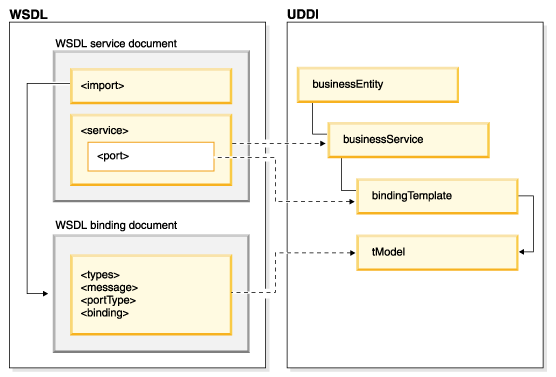
Figure  illustrates the relationship between UDDI and WSDL. The WSDL service element references the WSDL binding element. The URL of the document containing the WSDL binding element is published to the UDDI business registry as a tModel. The URL of the document containing the WSDL service element is published to the UDDI business registry as a businessService and contains information about the bindingTemplate.
4ψĹSOAP
SOAP is an XML-based standard for messaging over HTTP and other Internet protocols. It is a lightweight protocol for the exchange of information in a decentralized, distributed environment. It is based on XML and consists of three parts:
- An envelope that defines a framework for describing what is in a message and how to process it.
- A set of encoding rules for expressing instances of application-defined data types.
- A convention for representing remote procedure calls and responses.
SOAP enables the binding and usage of discovered Web services by defining a message path for routing messages. SOAP may be used to query UDDI for Web services.
ΫéÄεçïε·Ιη±Γη°Ωι½°εçèη°°οΦàSOAPεQâφ‰·δΗÄΩUçηΫΜι΅èγö³ψĹγ°Äεçïγö³ψĹεüΚδΚ?XML γö³εçèη°°οΦ¨ε°ÉηΔΪη°Ψη°Γφàêε€® WEB δΗäδΚΛφçΔγΜ™φû³ε¨•γö³ε£¨ε¦Κ娕γö³δΩΓφ¹·ψÄ?SOAP εè·δΜΞ壨γéΑε≠‰γö³η°ΗεΛö妆γâΙΨ|ëεçè簰壨φ†ΦεΦèΨl™εêàδΫΩγî®εQ¨ε¨Öφ΄§ηΕÖφ•΅φ€§δΦ†ηΨ™εçèη°°εQ?HTTPεQâοΦ¨ΫéÄεçïι²°δΜΕδΦ†ηΨ™εçèη°°οΦàSMTPεQâοΦ¨εΛöγî®ιÄîγΫëιôÖι²°δΜΕφâ©εÖÖεçèη°°οΦàMIMEεQâψIJε°É‰q‰φî·φ¨¹δΜéφΕàφ¹·Ψp»ùΜüεàΑηΩ€ΫE΄ηΩ΅ΫE΄ηΑÉγî®οΦàRPCεQâγ≠âεΛßι΅èγö³εΚîγî®γ®΄εΚèψÄ?/p>
ψÄÄψÄÄSOAP ε¨Öφ΄§δΗâδΗΣιÉ®εàÜεQ?
- SOAP û°¹ηΘÖεQöε°Éε°öδΙâδΚÜδΗÄδΗΣφΓÜφû”ûΦ¨η·ΞφΓÜφûΕφèè‰qνCΚÜφΕàφ¹·δΗ≠γö³εÜÖε°Ιφ‰·δΜÄδΙàοΦ¨ηΑ¹εΚîεΫ™εΛ³γêÜε°ÉδΜΞεèäε°Éφ‰·εè·ιÄâγö³‰q‰φ‰·εΩÖιΓΜγö³ψÄ?
- SOAP Ψ~•γ†¹ηß³εàôεQöε°Éε°öδΙâδΚÜδΗÄΩUçεΚèεà½ε¨•γö³φ€Κεà”ûΦ¨γî®δΚéδΚΛφçΔεΚîγî®ΫE΄εΚèφâÄε°öδΙâγö³φïΑφç°γ±Μεû΄γö³ε°ûδΨ΄ψÄ?
- SOAP RPC ηΓ®γΛΚεQöε°Éε°öδΙâδΚÜγî®δΚéηΓ®ΫCχôΩ€ΫE΄ηΩ΅ΫE΄ηΑÉγî®ε£¨εΚîγ≠îγö³εçèε°öψÄ?
ψÄÄψÄÄSOAP φΕàφ¹·εüΚφ€§δΗäφ‰·δΜéεèëιĹγΪ·εàΑφéΞφîΕγΪ·γö³εçïεêëδΦ†ηΨ™οΦ¨δΫÜε°ÉδΜ§εΗΗεΗΗγΜ™εêàη™vφùΞφâßηΓ¨γ±ΜδΦιgΚéη·δh±² / εΚîγ≠îγö³φ®ΓεΦèψIJφâÄφ€âγö³ SOAP φΕàφ¹·ιÉΫδ΄…γî?XML Ψ~•γ†¹ψIJδΗÄφù?SOAP φΕàφ¹·û°±φ‰·δΗÄδΗΣε¨ÖεêΪφ€âδΗÄδΗΣεΩÖι€Äγö?SOAP γö³εΑ¹ηΘÖε¨ÖεQ¨δΗÄδΗΣεè·ιÄâγö³ SOAP φ†΅ε˥壨δΗÄδΗΣεΩÖι€Äγö?SOAP δΫ™εù½γö?XML φ•΅φΓΘψÄ?br />
SOAP φΕàφ¹·φ†ΦεΦèεQ?/p>
ψÄÄψÄÄSOAP φ†΅εΛ¥
ψÄÄψÄÄ<SOAP-ENV: Envelope Attributes>
ψÄÄψÄÄ<SOAP-ENV:Body>
ψÄÄψÄÄAttributes
ψÄÄψÄÄ</SOAP-ENV:Body>
ψÄÄψÄÄ</SOAP-ENV:Envelope> 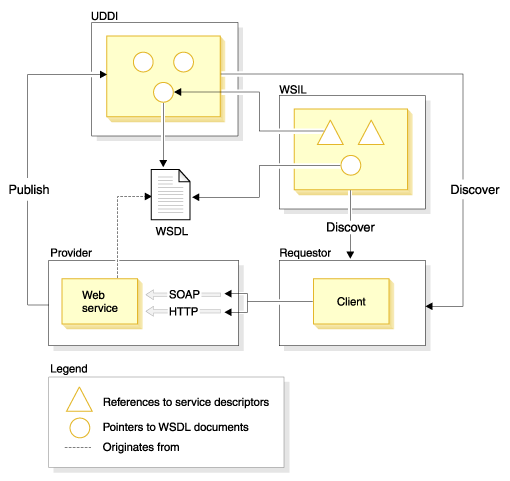
Web services γö³γßçΨc’dè·δΜΞδΊ™δΗâγßçεQ?br />
1ψĹεÖ±δΚΪεïÜδΗöδΩΓφ¹·ψIJεΠ²εQöφ•Αι½ÖRĹεΛ©φΑîιΔ³φäΞψĹη²ΓΦ€®ηΓ¨φÉÖγ≠âψÄ?br />2ψĹεïÜδΗöι¦ÜφàêψIJεΠ²εQöγΫëδΗäφ΄çεç•ψĹιΔ³η°Δγ≥ΜΨlüψĹδΩΓγî®φ†ΓιΣ¨γ≠âψÄ?br />3ψĹεïÜδΗöφΒ¹ΫE΄φâ©ε±ïψIJεΠ²εQöεêàρqΕδΦ¹δΗöγö³εàâôĆψĹφâΙεèëψĹι¦Εεî°γ≠âδΗöεäΓ΄Ι¹γ®΄ψÄ?br />
Web services γö³δΗöεäΓηߣηâ≤壨δΚΛδΚ£
εè·δΜΞεàÜδΊ™service provider, service broker, and service client
service providerδΗΜηΠ¹φ‰·εΨèγΪ΄εèëεΗÉWeb servicesψÄ?/p>
Service brokers φ‰·εΫ£Ψc’dΤàφ≥®εܨWeb servicesεQ¨δΜΞεà©δΚéφüΞη·ΔψÄ?/p>
Service clients εàôφ‰·ε€®Service brokersδΗ≠φüΞφâë÷àΑWeb servicesεQ¨γ³ΕεêéγΜëε°öεàΑService providersρqΕηΑÉγî®δΙ΄ψÄ?/p>
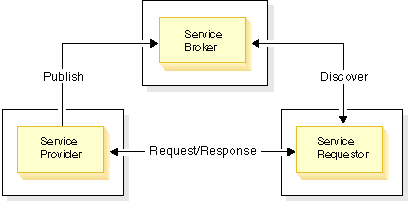
εè·δΜΞεè²ηÄ?a target="_blank">www.ibm.com/developerworks/webservices
Liferay Portalγö?/span>CMSεäüηÉΫφ‰·ιÄöηΩ΅Journal Portletε°ûγéΑγö³οΦ¨ε€®δΜ΄ΨlçφÄéφ†ΖδΫΩγî®Journal PortletδΙ΄εâçεQ¨φ€âεΩÖηΠ¹γêÜηßΘstructuresψÄ?/span>templatesε£?/span>articlesγö³φΠ²εΩΒοΦ¨ε°ÉδΜ§φ‰?/span>Journal portletεäüηÉΫγö³εüΚΦ΄ÄψÄ?/span>
l¬†¬†¬†¬†¬†¬†¬†¬† StructuresεQöε°öδΚéδΚÜcontentγö³γ±Μεû΄ε£¨φïΑι΅èεQ?/span>contentγö³γ±Μεû΄ε¨Öφ΄?/span>textψÄ?/span>text areaψÄ?/span>imagesψÄ?/span>selection listsΫ{?/span>
l¬†¬†¬†¬†¬†¬†¬†¬† TemplatesεQöγΓ°ε°?/span>contentφÄéφ†Ζφé£εà½φà•φëÜφî?/span>
l¬†¬†¬†¬†¬†¬†¬†¬† ArticlesεQöγΓ°ε°öφ·èδΗ?/span>contentε¨ÖεêΪγö³ε°ûιôÖγö³textε£?/span>images
¬†¬†¬†¬†¬† φàëδΜ§δΜΞδΗ΄ε¦ΨδΊ™δΨ΄ε°öδΙâδΗÄδΗ?/span>contentεQ¨εàÜδΗόZΗâδΗΣφ≠ΞιΣΛοΦö

ΫW§δΗÄφ≠ΞψĹεà¦εΜ?/span>StructureεQ¨ε¨ÖεêΪδΗÄδΗ΄εÖÉ㥆οΦöδΗÄδΗ?/span>textεÖÉ㥆εêçδΊ™βÄ?/span>headlineβÄùοΦàε·ΙεΚî妳Γâ΅1ε¨ΚεüüεQâψĹδΗâδΗ?/span>text areaεÖÉ㥆δΗΚεêçΩUΑεàÜεàΪδΊ™βÄ?/span>body-textβÄùοΦàε·ΙεΚî4ε¨ΚεüüεQâβÄ?/span>caption-1βÄùοΦàε·ΙεΚî2ε¨ΚεüüεQâβÄ?/span>caption-2βÄùοΦàε·ΙεΚî6ε¨ΚεüüεQâψĹδΗΛδΗ?/span>imageεÖÉ㥆εêçγßΑεàÜεàΪδΗΚβÄ?/span>image-1βÄùοΦàε·ΙεΚî3ε¨ΚεüüεQâ壨βÄ?/span>image-2βÄùοΦàε·ΙεΚî5ε¨ΚεüüεQ?/span>
φΖ’dä†ε°¨ηΩôδΚ¦εÖÉ㥆εêéγö³γï¨ιùΔεΠ²δΗ΄οΦö
γ²Ιε΅ΜLaunch Editorφ¨âι£°εQ¨εè·δΜΞ〴εà?/span>XMLε°öδΙâεQ¨δΙüεè·δΜΞε€®φ≠ΛεΔûεà†φà•δΩ°φîΙεÖÉ㥆εèäΨc’dû΄εQ¨εÜÖε°ΙεΠ²δΗ΄οΦö
 <root>
<root> ¬†¬†<dynamic-element¬†name='headline'¬†type='text'></dynamic-element>
¬†¬†<dynamic-element¬†name='headline'¬†type='text'></dynamic-element> ¬†¬†<dynamic-element¬†name='body-text'¬†type='text_area'></dynamic-element>
¬†¬†<dynamic-element¬†name='body-text'¬†type='text_area'></dynamic-element> ¬†¬†<dynamic-element¬†name='caption-1'¬†type='text_area'></dynamic-element>
¬†¬†<dynamic-element¬†name='caption-1'¬†type='text_area'></dynamic-element> ¬†¬†<dynamic-element¬†name='caption-2'¬†type='text_area'></dynamic-element>
¬†¬†<dynamic-element¬†name='caption-2'¬†type='text_area'></dynamic-element> ¬†¬†<dynamic-element¬†name='image-1'¬†type='image'></dynamic-element>
¬†¬†<dynamic-element¬†name='image-1'¬†type='image'></dynamic-element> ¬†¬†<dynamic-element¬†name='image-2'¬†type='image'></dynamic-element>
¬†¬†<dynamic-element¬†name='image-2'¬†type='image'></dynamic-element> </root>
</root>
ΫW§δΚ¨φ≠ΞψĹεà¦εΜ?/span>TemplateεQ¨φΖΜεÖ?/span>IDψÄ?/span>NameψÄ?/span>DescriptionδΩΓφ¹·εêéοΦ¨ε€?/span>StructureδΗÄφ†èιÄâφ΄©δΗäδΗÄφ≠Ξεà¦εΜΚγö³StructureεQàηΩô顨亙testεQ?br />
γ³Εεêéγ²Ιε΅ΜLaunch Editorφ¨âι£°εQ¨φâ™εΦÄTemplateΨ~•ηΨëΫH½εèΘεQ¨φ¨âγÖßφâÄι€ÄηΠ¹γö³φ†ΦεΦèε°öδΙâTemplateεQ¨εΠ²δΗ΄οΦö
 <?xml¬†version="1.0"?>
<?xml¬†version="1.0"?>
 <xsl:stylesheet¬†xmlns:xsl="http://www.w3.org/1999/XSL/Transform"¬†version="1.0">¬†¬†
<xsl:stylesheet¬†xmlns:xsl="http://www.w3.org/1999/XSL/Transform"¬†version="1.0">¬†¬† ¬†¬†<xsl:output¬†method="html"¬†omit-xml-declaration="yes"/>¬†¬†
¬†¬†<xsl:output¬†method="html"¬†omit-xml-declaration="yes"/>¬†¬† ¬†¬†<xsl:template¬†match="/">¬†
¬†¬†<xsl:template¬†match="/">¬† ¬†¬†¬†¬†<table¬†cellpadding="0"¬†cellspacing="0"¬†border="0"¬†width="100%">¬†
¬†¬†¬†¬†<table¬†cellpadding="0"¬†cellspacing="0"¬†border="0"¬†width="100%">¬† ¬†¬†¬†¬†¬†¬†<tr>¬†
¬†¬†¬†¬†¬†¬†<tr>¬† ¬†¬†¬†¬†¬†¬†¬†¬†<td¬†colspan="2">
¬†¬†¬†¬†¬†¬†¬†¬†<td¬†colspan="2"> ¬†¬†¬†¬†¬†¬†¬†¬†¬†¬†<xsl:value-of
¬†¬†¬†¬†¬†¬†¬†¬†¬†¬†<xsl:value-of ¬†disable-output-escaping="yes"¬†select="root/dynamic-element[@name='headline']/dynamic-content"/>
¬†disable-output-escaping="yes"¬†select="root/dynamic-element[@name='headline']/dynamic-content"/> ¬†¬†¬†¬†¬†¬†¬†¬†</td>
¬†¬†¬†¬†¬†¬†¬†¬†</td> ¬†¬†¬†¬†¬†¬†</tr>
¬†¬†¬†¬†¬†¬†</tr> ¬†¬†¬†¬†¬†¬†<tr>
¬†¬†¬†¬†¬†¬†<tr> ¬†¬†¬†¬†¬†¬†¬†¬†<td>
¬†¬†¬†¬†¬†¬†¬†¬†<td> ¬†¬†¬†¬†¬†¬†¬†¬†¬†¬†<img>¬†
¬†¬†¬†¬†¬†¬†¬†¬†¬†¬†<img>¬† ¬†¬†¬†¬†¬†¬†¬†¬†¬†¬†¬†¬†<xsl:attribute¬†name="src">¬†
¬†¬†¬†¬†¬†¬†¬†¬†¬†¬†¬†¬†<xsl:attribute¬†name="src">¬† ¬†¬†¬†¬†¬†¬†¬†¬†¬†¬†¬†¬†¬†¬†<xsl:value-of¬†
¬†¬†¬†¬†¬†¬†¬†¬†¬†¬†¬†¬†¬†¬†<xsl:value-of¬† disable-output-escaping="yes"¬†select="root/dynamic-element[@name='image-1']/dynamic-content"/>¬†
disable-output-escaping="yes"¬†select="root/dynamic-element[@name='image-1']/dynamic-content"/>¬† ¬†¬†¬†¬†¬†¬†¬†¬†¬†¬†¬†¬†</xsl:attribute>¬†
¬†¬†¬†¬†¬†¬†¬†¬†¬†¬†¬†¬†</xsl:attribute>¬† ¬†¬†¬†¬†¬†¬†¬†¬†¬†¬†</img>
¬†¬†¬†¬†¬†¬†¬†¬†¬†¬†</img> ¬†¬†¬†¬†¬†¬†¬†¬†</td>
¬†¬†¬†¬†¬†¬†¬†¬†</td> ¬†¬†¬†¬†¬†¬†¬†¬†<td>
¬†¬†¬†¬†¬†¬†¬†¬†<td> ¬†¬†¬†¬†¬†¬†¬†¬†¬†¬†<xsl:value-of¬†
¬†¬†¬†¬†¬†¬†¬†¬†¬†¬†<xsl:value-of¬† disable-output-escaping="yes"¬†select="root/dynamic-element[@name='caption-1']/dynamic-content"/>
disable-output-escaping="yes"¬†select="root/dynamic-element[@name='caption-1']/dynamic-content"/> ¬†¬†¬†¬†¬†¬†¬†¬†</td>
¬†¬†¬†¬†¬†¬†¬†¬†</td> ¬†¬†¬†¬†¬†¬†</tr>
¬†¬†¬†¬†¬†¬†</tr> ¬†¬†¬†¬†¬†¬†<tr>
¬†¬†¬†¬†¬†¬†<tr> ¬†¬†¬†¬†¬†¬†¬†¬†<td¬†colspan="2">
¬†¬†¬†¬†¬†¬†¬†¬†<td¬†colspan="2"> ¬†¬†¬†¬†¬†¬†¬†¬†¬†¬†<xsl:value-of¬†
¬†¬†¬†¬†¬†¬†¬†¬†¬†¬†<xsl:value-of¬† disable-output-escaping="yes"¬†select="root/dynamic-element[@name='body-text']/dynamic-content"/>
disable-output-escaping="yes"¬†select="root/dynamic-element[@name='body-text']/dynamic-content"/> ¬†¬†¬†¬†¬†¬†¬†¬†</td>
¬†¬†¬†¬†¬†¬†¬†¬†</td> ¬†¬†¬†¬†¬†¬†</tr>
¬†¬†¬†¬†¬†¬†</tr> ¬†¬†¬†¬†¬†¬†<tr>
¬†¬†¬†¬†¬†¬†<tr> ¬†¬†¬†¬†¬†¬†¬†¬†<td>
¬†¬†¬†¬†¬†¬†¬†¬†<td> ¬†¬†¬†¬†¬†¬†¬†¬†¬†¬†<xsl:value-of¬†
¬†¬†¬†¬†¬†¬†¬†¬†¬†¬†<xsl:value-of¬† disable-output-escaping="yes"¬†select="root/dynamic-element[@name='caption-2']/dynamic-content"/>
disable-output-escaping="yes"¬†select="root/dynamic-element[@name='caption-2']/dynamic-content"/> ¬†¬†¬†¬†¬†¬†¬†¬†</td>
¬†¬†¬†¬†¬†¬†¬†¬†</td> ¬†¬†¬†¬†¬†¬†¬†¬†<td>
¬†¬†¬†¬†¬†¬†¬†¬†<td> ¬†¬†¬†¬†¬†¬†¬†¬†¬†¬†<img>¬†
¬†¬†¬†¬†¬†¬†¬†¬†¬†¬†<img>¬† ¬†¬†¬†¬†¬†¬†¬†¬†¬†¬†¬†¬†<xsl:attribute¬†name="src">¬†
¬†¬†¬†¬†¬†¬†¬†¬†¬†¬†¬†¬†<xsl:attribute¬†name="src">¬† ¬†¬†¬†¬†¬†¬†¬†¬†¬†¬†¬†¬†¬†¬†<xsl:value-of¬†
¬†¬†¬†¬†¬†¬†¬†¬†¬†¬†¬†¬†¬†¬†<xsl:value-of¬† disable-output-escaping="yes"¬†select="root/dynamic-element[@name='image-2']/dynamic-content"/>¬†
disable-output-escaping="yes"¬†select="root/dynamic-element[@name='image-2']/dynamic-content"/>¬† ¬†¬†¬†¬†¬†¬†¬†¬†¬†¬†¬†¬†</xsl:attribute>¬†
¬†¬†¬†¬†¬†¬†¬†¬†¬†¬†¬†¬†</xsl:attribute>¬† ¬†¬†¬†¬†¬†¬†¬†¬†¬†¬†</img>
¬†¬†¬†¬†¬†¬†¬†¬†¬†¬†</img> ¬†¬†¬†¬†¬†¬†¬†¬†</td>
¬†¬†¬†¬†¬†¬†¬†¬†</td> ¬†¬†¬†¬†¬†¬†</tr>
¬†¬†¬†¬†¬†¬†</tr> ¬†¬†¬†¬†</table>¬†
¬†¬†¬†¬†</table>¬† ¬†¬†</xsl:template>¬†
¬†¬†</xsl:template>¬† </xsl:stylesheet>
</xsl:stylesheet>
δΗ΄ιùΔε·Ιη·Ξφ•΅δög‰q¦ηΓ¨η·¥φ‰éεQ?/span>
1ψĹηΩô顨γö³@name=βÄ?/font>εêçγßΑβÄ?/font>εΩÖιΓΜηΠ¹ε£¨ΫW§δΗÄφ≠ΞδΗ≠εà¦εΨèStructureδΗ≠γö³εÖÉ㥆εêçγßΑδΗÄη΅Ώ_Φ¨ôεΒιùΔφ†ΦεΦèφ†“é(gu®©)ç°ι€Äφ±²δ΄…γî?/span>HTMLη·≠η®Äε°öδΙâεç¦_è·ψÄ?/span>
2ψĹε·ΙtextψÄ?/span>text areaΨc’dû΄γö³εÖÉ㥆ηΨ™ε΅Κφ½Εγö³φ†ΦεΦèεΠ²δΗ΄οΦö
<xsl:value-of
disable-output-escaping="yes" select="root/dynamic-element[@name='caption-2']/dynamic-content"/>
1ψÄ?span style="FONT: 7pt 'Times New Roman'; font-size-adjust: none; font-stretch: normal">¬†
ε·?/span>imageΨc’dû΄γö³εÖÉ㥆ηΨ™ε΅Κφ½Εγö³φ†ΦεΦèεΠ²δΗ΄οΦö<img>
  <xsl:attribute name="src">
    <xsl:value-of
disable-output-escaping="yes" select="root/dynamic-element[@name='image-2']/dynamic-content"/>
  </xsl:attribute>
</img>
ΫW§δΗâφ≠ΞψĹεà¦εΜ?/span>ArticleεQ¨φΖΜεÜôεüΚφ€§δΩΓφ¹·εêéεQ¨ε€®StructureδΗÄφ†èιÄâφ΄©testεQ¨ε·ΙεΚîγö³TemplateδΗÄφ†èδΙüιÄâφ΄©testεç¦_è·εQ¨γ³Εεêéε€®ε·ΙεΚîγö³εÖÉ㥆εüü顨φΖΜεÖΞεêàιIJγö³φ•΅φ€§φà•ηÄÖε¦Ψγâ΅οΦ¨γ²Ιε΅ΜιΔ³ηßàεç¦_è·δΜΞ〴εàΑεΠ²δΗ΄γï¨ιùΔοΦ¨Φ΄°ε°öφ½†ι½°ιΔ‰εêéεQ¨γ²Ιε΅÷MΩùε≠‰φà•ηÄÖδΩùε≠‰εΤàεèëεΗÉφ¨âι£°εç¦_è·ε°¨φàêcontentγö³ε°öεàΕψÄ?br />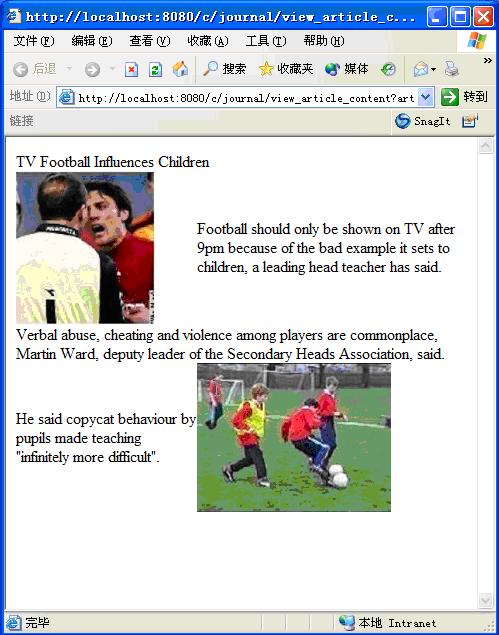
ιÄöηΩ΅δΜΞδΗäδΗâδΗΣφ≠ΞιΣΛεQ¨φàëδΜ§εΑ±ε°ûγéΑδΚÜε°öεà?/span>contentγö³εäüηÉΫψÄ²δ΄…γî?/span>Journal PortletεQ¨φàëδΜ§εè·δΜΞε°öεàΕδ™QδΫïδΗçεê¨ιΘéφ†Φγö³contentφùΞε±ïΫCΚεΩÖηΠ¹γö³δΩΓφ¹·ψÄ?/span>
3sixteenφ‰·δΗÄδΗΣε¹öφ€çηΘÖTφ¹Λγö³εÖ§εèΗεQ¨ι€ÄηΠ¹φâ©εΛßεèëε±ïψIJδΜ•δΜ§φ≥®φ³èεàΑδΚ?/span>Liferayφ€âφ³èγî®δΙ΄φùΞι¦ÜφàêδΗÄδΗΣεïÜδΗöι½®φà½ςIJδΫÜφ‰·οΦ¨δΜ•δΜ§εèàφ³üηßâε€®δΗÄδΗΣηΕÖεâçφ½Εû°öγö³φ€çεäΓηΓ¨δΗöLiferayδΦιgΙéφ‰ë÷Ψ½φ€âγ²ΙεΛΣδΗëδΚÜοΦ¨φà•ηÄÖη·¥δΗçεÖΞφ†Ι{Ä²δΊ™δΚÜηßΘεܨôΩôδΗΣγü¦γ¦ΨοΦ¨δΜ•δΜ§δΗçεΨ½δΜΞφääWEBηΓ®γéΑε±²εàÜφàêδΚÜδΗΛδΗΣγΪôγ²ΙεQöδΗÄδΗΣδώîε™¹ε±ïΫCΚγΪôγ²Ι壨δΗÄδΗΣε€®ΨUΩη¥≠δΙΑγΪôγ²èVÄ?/span>
Ψl™φû€εQ?/span> www.3sixteen.com φàêδΚÜδΗÄδΗΣεüΚδΚ?/span> Flash φäÄφ€·γö³φΦ²δΚ°γΪôγ²ΙεQ¨ηÄ?/span> my.3sixteen.com εàôφ‰·δΗÄδΗΣεüΚδΚ?/span> Liferay γö?/span> vanilla γâàφ€§γö³ε€®ΨUΩη¥≠γâ©γΪôγ²èVIJηΩôδΗΛδΗΣγΪôγ²ΙεàÜεàΪε°âηΘÖε€®δΗçεê¨γö³δΗΛδΗΣ Linux δΗάL€ΚδΗäοΦ¨εüόZΚéγ¦°φ†΅εèäγî®ιÄîγö³ηÄÉηôëεè·δΜΞεΗÉγ÷vε€®δΗçεê¨γö³ε¦Ϋε°ΕψÄ?/span>
ôεΙγ¦°γö³δΗÄδΗΣι΅çηΠ¹ι€Äφ±²φ‰·ηΠ¹εΨèγΪ΄δΗÄδΗΣι²°δΜΕε€ΑεùÄΫéΓγêÜΨp»ùΜüεQ¨γî®φùΞφîΕι¦Üγ¦°φ†΅ε°ΔφàοLö³ι²°δögε€ΑεùÄψIJδΚéφ‰·οΦ¨ε€?/span> Flash δΫ€γö³γΪôγ²ΙδΗ≠φàëδΜ§εä†εÖΞδΚÜεΦΙε΅ΚεΖΞγΣ½εèΘοΦ¨γî®φùΞιÄöηΩ΅ι½®φàΖφ€çεäΓεô®ηΠ¹εΔûεä†η°ΑεΫïφüêε°ΔφàοLö³‰qôδΗΣι²°δögε€ΑεùÄεàΑγ≥ΜΨlüδΗ≠ψÄ?/span>
δΜΞδΗ΄φ‰·γ¦ΗεΚîγö³ JSP γâ΅φ°ΒεQ¨ε°Éεà©γî® ABContactManagerHttp γö³εäüηÉΫφùΞεΔûεä†φ•Αγö³η¹îγ≥ΜδΚΚψÄ?/span>
HttpPrincipal httpPrincipal = new HttpPrincipal(URL, "joe_bloggs", "password");
ABContactManagerHttp.addContact(httpPrincipal, firstName, lastName, emailAddress);
ABContactManagerHttp ηΑÉγî®δΚ?/span> ABContactManagerUtil δΗ≠γö³ addContact φ•“é(gu®©)≥ïεQ¨ηĨι΅çηΠ¹γö³φ‰·ηΩôδΗΣηΑÉγî®φ‰·ιÄöηΩ΅ 80 γΪ·εèΘεQ¨γ¦¥φéΞγî±ι½®φàΖγΪôγ²Ιγö?/span> http://my.3sixteen.com/tunnel/servlet/AuthTunnelServlet φéΞφîΕεQ¨εΚîγî®φ€çεäΓεô®εèΣηΠ¹εàΛε°öη°Λη·¹εêàφ≥ïδΙ΄εêéεQ¨εΑ±δΜ?/span> ID φ‰?/span> joe_bloggs γö³γî®φàοLö³μwΪδÜΨ ηΑÉγî® addContact φ•“é(gu®©)≥ïεQ¨γ³Εεêéγî± ABContactManagerUtil ηΑÉγî®ε°ûγéΑΨc?/span> ABContactManagerImpl φùΞε°¨φàêγ€üφ≠Θγö³φΖ’dä†η¹îγ≥ΜδΚΚγö³εΖΞδΫ€ψIJηΩôδΗĉq΅γ®΄εè·ηÉΫιÄöηΩ΅φüΞη΅Σεä®γîüφàêγö³ JavaDocs φ•΅φΓΘδΗ≠γö³φΚêδΜΘγ†¹φùΞη·¹ε°ûψÄ?br />
δΙ΄εêéεëΔοΦ¨ι²ΘδΗΣJoe Bloggsû°±εè·δΜΞγôΜεΫïι½®φàχPΦ¨ιÄöηΩ΅φüΞ〴ε°Éγö³ε€ΑεùÄφ€§εèëγéΑεΛöδΚÜδΗÄδΗΣφ•Αγö³η¹îΨp÷MùhδΚÜψIJηĨδΗîε€®γ≥ΜΨlüγö³εÖΕε°Éι½®φàΖεçïεÖÉδΙüεè·δΜΞιÄöηΩ΅εçèεä©ΨcΜοΦàhelper classsesεQâηΨΨεàΑεê¨φ†οLö³γ¦°γö³ψIJηĨεèΠεΛ•δΗÄφ•öwùΔ‰qôδΙüεè·ηÉΫφ‰·δΗÄδΗΣε°âεÖ®ιöêφ²(zh®®n)Θο֨妆亙ιöèδΨΩδΗÄδΗΣδùhû°±εè·δΜΞιÄöηΩ΅δΗÄδΗΣεΑèJAVAεQ?/span>appletsεQâφà•εÖΕε°ÉΫE΄εΚèεQ¨δΜéηÄ¨γ¦¥φéΞηΑÉγî®φ€âδΗöεäΓιÄΜηΨëεäüηÉΫγö?/span>EJBεQ¨εèΣηΠ¹δΜ•φ΄Ξφ€âη°Λη·¹γö³ε·Üγ†¹ψIJδΗÄδΗΣεΚîε·Ιγö³φ•“é(gu®©)≥ïφ‰·ιÄöηΩ΅δΩ°φîΙportal.propertiesφùΞεèΣφ¨΅ε°öγâΙε°öγö³γΪ·εèΘδΨΠεê§ηΩôΨcάL€çεäΓη·Ζφ±²ψÄ?/span>
εΫ™γ³ΕδΙüεè·δΜΞιÄöηΩ΅ SOAT φà?/span> RMI Ϋ{âφùΞηΑÉγî® EJBψÄ?br />
Liferayφ‰·δΗÄδΗΣη΅ΣδΗ΄ηĨδΗäε°¨φï¥γö³εΚîγî®γ≥ΜΨlüφèêδΨ¦ηÄÖψIJδΜΞδΗ΄φ‰·φΓàδΨ΄φΗÖεçïεQ¨ε°ÉδΜ§ιÉΫφ‰·εçïδΗÄι½®φàΖεçïδΗÄφïΑφç°εΚ™γ≥ΜΨlüψÄ?/span>
http://demo.liferay.net
http://my.ccuc.net
http://my.3sixteen.com
http://portal.liferay.com
http://www.gatewayfriends.org
http://www.jasonandiris.com
εÖΕδΗ≠φ·èδΗΣι½®φàΖγö³γî®φàΖιÉΫδΗéεÖΕε°Éι½®φàΖε°¨εÖ®ιöîΦ¦ΜοΦ¨ι½®φàΖι½¥φ‰·δΨùφç°εê³η΅Σγö³εÖ§εè?/span> ID ιÄöηΩ΅εüüφùΞεàÜεâ≤δΗçεê¨γö³γ©Κι½¥ψÄ?/span>
εΠ²φû€ε·Ιε€®εê¨δΗÄφ€Κεô®ι¦ÜφàêεΛöδΗΣ Liferay φ€âεÖ¥≠ëΘοΦ¨η·Ζεè²ι‰?/span> Multiple Portals ψÄ?/span>
δΫÜε€®POJOγö³ε°ûγéΑφ•Ιφ≥ïδΗäLiferayγö³δΗΛδΗΣγâàφ€§φ€âφâÄδΗçεê¨εQ¨δΦ¹δΗöγâàεQ?/span>enterpriseεQâδΗ≠ιÄöηΩ΅EJBδΜéηÄ¨δΊ™εΛßγΪô㲓é(gu®©)èêδΨ¦δΚÜιΪ‰φâ©ε±ïφÄßεê³ηâ·εΞΫγö³δΚ΄εäΓφî·φ¨¹ηÉΫεä¦οΦàεΠ²ι¦ÜΨüΛοΦâεQ¨ηĨδΗ™δΗöγâàεQ?/span>professionaεQâ㦥φéΞιÄöηΩ΅ηΫΜι΅èΨUßγö³φéΞεèΘε°¨φàêψÄ?br />
φâÄφ€âγö³δΗöεäΓφïΑφç°ιÉΫιÄöηΩ΅HibernateφùΞε°ûγéΑεΤàιÄöηΩ΅POJOφùΞηΑÉγî®ψÄ?/span>Liferayφ¦³ΓΜèδΫΩγî®CMPφäÄφ€?/span>.φùΞε°ûγéΑφ¨¹δΙÖε±²εQ¨δΫÜεêéφùΞ妆ιÄüεΚΠεèäγ¹Β΄zάLÄßγ≠âεéü妆φîΙγî®HibernateψÄ²ε€®φïΑφç°εΚ™φ•ΙιùΔοΦ¨LiferayδΙüε°¨εÖ®εÖΦε°ΙεΛßεΛöφïΑδΗάLΒ¹Ψc’dû΄DBψÄ?br />
LiferayδΫΩγî®JAASφùΞε°¨φàêγî®φà·²°Λη·¹ε°âεÖ®γ°ΓγêÜοΦ¨εΞΫεΛ³φ‰·εΫ™δΗÄδΗΣγî®φàοLôΜεΫïεêéεQ¨ε°Éγö³ε°âεÖ®ε±ûφÄßεè·δΜΞε€®Servletε£?/span>EJBε±²δΗ≠φ≤Ωγî®εQ¨γ€üφ≠ΘδΫ€εàΑγ≥ΜΨlüγώîγö?/span>SSOψIJεÖΖδΫ™η°≤εQ¨ηΩ€ΫE?/span>EJBεè·δΜΞφ≤Ωγî®ε°âεÖ®΄²ÄφüΞεèäφùÉιôêε±ûφÄßοΦ¨φ€§ε€Αγö?/span>EJBφ‰·δΊ™εÖΕε°ÉEJBφèêδΨ¦δΗöεäΓιÄΜηΨëφ€çεäΓγö³οΦ¨δΗçηÉΫηΔΪηΩ€ΫE΄ηΑÉγî®φâÄδΜΞδΙüδΗçεΩÖε¹öφ≠ΛΨcάLΘÄφüΞοΦ¦ε°âεÖ®εéüεàôδΙüφ¥ΨγîüεàΑPOJOε°ûγéΑδΗ≠οΦ¨ηĨηΩôφ≠Λε°ûγéΑεÖΕε°ûφ‰·‰q€γ®΄EJBγö³εüΚΦ΄ÄΨcÖRÄ?/span>
δΦ¹δΗöγâàεΦèδΫΩγî®EJBεQ¨φâÄδΜΞγ≥ΜΨlüεàÜεàΪεè·δΜΞε€®WEBφ€çεäΓεô®ψÄ?/span>EJBφ€çεäΓεô®ψĹφïΑφç°εΚ™φ€çεäΓεô®δΗâε±²δΗ≠ε°ûγéΑι¦ÜγΨΛψIJεΫ™γ³Εε€®nε±²γö³Ψp»ùΜüδΗ≠οΦ¨ι¦ÜγΨΛδΙüδΩùφ¨¹δΦ‰εäΩοΦ¨ηĨδΗîε€®φ·èδΗÄε±²ιÉΫρqΕδΗçεΦχôΩΪδΫΩγî®ι¦ÜγΨΛεQ¨ηΩôδΚ¦ιÉΫδΗΚεΛßδΦ¹δΗöεΚîγî®φèêδΨ¦δΚÜφû¹εΞΫγö³εΦ“é(gu®©)ÄßιÄâφ΄©φùÉψÄ?/span>
Ψp»ùΜüδΗ≠γö³EJBψÄ?/span>HBMψĹδΜΞεèäφ®ΓεΦ?/span>ModelηÄÖφ‰·antφâßηΓ¨build-ejbδΜ’däΓφ½”ûΦ¨ιÄöηΩ΅η·’dè•γ¦°εΫï/portal-ejbδΗ΄γö³ejb.xmlφ•΅δögεQ¨γ³Εεêéη΅Σεä®γîüφàêγö³ψIJφ·èδΗΣφ€âφ¨¹δΙÖε±²ε·Ιη±Γγö³ι½®φàΖεçïεÖÉεQ?/span>portletεQâιÉΫφ€âη΅ΣεΖόqö³ejb.xmlφ•΅δögεQàεè·δΜΞε€®/portal-ejbδΗ΄φê€γ¥ΔεΨ½εàΑφΗÖεçïοΦâψIJεΫ™ι€ÄηΠ¹γîüφàêφ¨¹δΙÖε±²γö³γ±Μφ½”ûΦ¨û°±φääφ•΅δögεΛçεàΕεà?/span>/portal-ejbδΗ΄οΦ¨‰qôγîüφàêεΖΞεÖδh‰·εΜΚγΪ΄ε€?/span>XDocletδΙ΄δΗäγö³ψÄ?br />
δΨ΄εΠ²εQöιÄöηΩ΅η·’dè•Bookmarksι½®φàΖεçïεÖÉγö?/span>ejb.xmlφ•΅δögιÖçγΫ°εêéοΦ¨η΅Σεä®γîüφàêδΗ΄εà½γö³φ®ΓεΦèγ±ΜψIJφ·èδΗΣγ±Με·ΙεΚîφïΑφç°εΚ™δΗ≠γö³δΗÄδΗΣηΓ®ψIJφΑΗ‰q€δΗçηΠ¹φâ΄εΖΞδΩ°φî?/span>BookmarksEntryModelΨcΜοΦ¨ηĨηΠ¹ιÄöηΩ΅δΩ°φîΙBookmarksEntryεQ¨γ³ΕεêéεÜçφ¦¥φ•ΑBookmarksEntryModelεÜÖε°ΙψIJηΩôφ†Ζε¹öγö³εΞΫεΛ³φ‰·ε΅èεΑëδΚÜ㦥φéΞεÜôδΜΘγ†¹γö³εΖΞδΫ€οΦ¨ηĨεèΣε¹öγ¦ΗεΚîγö³φ†΅η°ΑεΖΞδΫ€ψÄ?br />com.liferay.portlet.bookmarks.model.BookmarksEntry
com.liferay.portlet.bookmarks.model.BookmarksEntryModel
com.liferay.portlet.bookmarks.model.BookmarksFolder
com.liferay.portlet.bookmarks.model.BookmarksFolderModel
HibernateΨcάL‰·φ†“é(gu®©)ç°φ®ΓεΦèεQ?/span>modelεQâγ±Με·ΙεΚîγîüφàêγö³ψIJηΩôφ†ΖεΑ±εè·δΜΞε€®εΛöε±²γ≥ΜΨlüδΗ≠εÖ¹η°Ηφ®ΓεΦèΨcάL‰·εè·δΫ€εΚèεà½ε¨•εΛ³γêÜγö³εQ¨ηÄ?/span>HibernateΨc’dàôδΗçεΩÖψÄ?br />com.liferay.portlet.bookmarks.ejb.BookmarksEntryHBM
com.liferay.portlet.bookmarks.ejb.BookmarksFolderHBM
φ¨¹δΙÖε±²γö³φ•“é(gu®©)≥ïεΠ²οΦöadd, update, delete, find, remove, δΜΞεèäcountεQ¨γ≥ΜΨlüιÉΫιΜ‰η°Λη΅Σεä®γîüφàêψÄ?br />com.liferay.portlet.bookmarks.ejb.BookmarksEntryPersistence
com.liferay.portlet.bookmarks.ejb.BookmarksFolderPersistence
δΙüγîüφàêδΚÜδΗ™ι½®γö³εçèεä©γ±ΜεQ?/span>Helper classesεQâοΦ¨εè·δΜΞγî®φùΞηΑÉγî®φ¨¹δΙÖε±²φ•Ιφ≥ïψIJιΜ‰η°Λφ½ΕεQ¨εçèεä©γ±ΜηΑÉγî®Hibernateγö³φ•Ιφ≥ïφùΞε·“é(gu®©)ïΑφç°εΚ™‰q¦ηΓ¨φ¦¥φ•Αφ™çδΫ€εQ¨δΫÜφ‰·δΙüεè·δΜΞφîΙεÜôportal.propertiesδΗ≠γö³ιÖçγΫ°εQ¨δ΄…γî®η΅ΣεΖΉÉΗ™γî®γö³ΨcάLùΞε°¨φàêεQ¨δΫ܉qôγßçΨcΜηΠ¹φ±²ηΠ¹ΨlßφâΩιΜ‰η°Λγö³φ¨¹δΙÖε±²ΨcÖRIJφçΔ≠aÄδΙ΄οΦ¨γî®φàΖε°¨εÖ®εè·δΜΞε°öεàΕη΅ΣεΖ±γö³φ¨¹δΙÖε±²φïΑφç°εQ¨εè·δΜΞφ‰·δΗÄδΗΣφ≠ΘΨlüγö³φïΑφç°εΚ™οΦ¨φà•ηÄÖφ‰·LDAPφ€çεäΓεô®οΦ¨εÖΕε°ÉδΜÄδΙàγö³ψÄ?/span>
com.liferay.portlet.bookmarks.ejb.BookmarksEntryUtil
com.liferay.portlet.bookmarks.ejb.BookmarksFolderUtil
δΗόZΚÜε΅èεΑëε·Ιη±Γγîüφàêγö³φàêφ€§οΦ¨εΦïεÖΞδΚÜε·Ιη±Γφ±†εQ¨εè·δΜΞιÄöηΩ΅δΩ°φîΙportal.propertiesφ•΅δögφùΞφéßεàΕφ±†γö³εüΚφ€§εä®δΫ€ψÄ?/span>
com.liferay.portlet.bookmarks.ejb.BookmarksEntryPool
com.liferay.portlet.bookmarks.ejb.BookmarksFolderPool
γî®φùΞε°ûγéΑδΗöεäΓιÄΜηΨëγö?/span>POJεQ·γ±ΜεQ¨ιÄöηΩ΅ΨlßφâΩPrincipalBeanΨcΜοΦ¨φùΞε°ûγéΑφ€âεÖ¨ôΑÉγî®ηÄÖγö³φ•“é(gu®©)≥ïεQ¨φâÄδΜΞεè·δΜΞηΩ€ΫE΄ηΑÉγî®ψIJεΠ²εQöηΑÉγî?/span>getUserId()εè·δΜΞεΨ½εàΑεΫ™εâçγî®φàΖγö?/span>IDεQ¦ηΑÉγî?/span>getUser()εàôηΩîε¦ûεΫ™εâçγî®φàοLö³ε·Ιη±ΓψÄ?/span>EJBεÜçγëτφâΩηΩôΨc?/span>POJOεQ¨ε°ûγéΑηΩ€ΫE΄ηΑÉγî®ψÄ?/span>
δΨ΄εΠ²εQöδΗ΄ιùΔγö³Ψc’d°ûγéνCΚÜεQ¨εÖ¹η°ΗεΫ™δΗîεÖ§εΫ?/span>bookmarkôεΙγ¦°φà•γ¦°εΫïγö³γîüφàêηÄÖεè·δΜΞεà†ιôΛε°ÉψIJηΩôδΚ¦ε·Ιη±ΓεèΣφ€âε€®δΗçε≠‰ε€®φ½Εφâçεè·ηÉΫηΔΪεà¦εΨèψÄ?/span>
εçèεä©ΨcΜοΦàHelper classesεQâφ‰·ε€?/span>POJOγö³ε°ûγéΑεüΚΦ΄ÄδΗäγîüφàêγö³ψIJε°Éεè·δΜΞηä²γΚΠεΦÄεèëηÄÖγö³εΖΞδΫ€εQ¨δΗçεΩÖδΙΠεÜôεΨàεΛöηΓ¨γö³δΜΘγ†¹οΦ¨ηĨεèΣηΠ¹γ°Äεçïγö³φâë÷àΑεêàιIJγö³EJB wrapperφà?/span>POJOε°ûγéΑεQ¨ιÄöηΩ΅ηΑÉγî®BookmarksEntryManagerUtil.addEntryφùΞι½¥φéΞηΑÉγî®γ¦ΗεΚîγö³BookmarksEntryManagerImpl.addEntryφ•“é(gu®©)≥ïû°±εè·δΜΞδΚÜψÄ?/span>
BookmarksEntryManagerUtilιÄöηΩ΅ηΑÉγî®BookmarksFolderManagerFactoryφùΞφüΞφâë÷°ûγé?/span>BookmarksEntryManagerγö³γ±ΜψIJδΙüφ≠Θφ‰·ιÄöηΩ΅BookmarksFolderManagerFactoryφùΞη·Üεà?/span>Springε£?/span>portal.propertiesδΗ≠γö³ιÖçγΫ°φùΞεÜ≥ε°öηΠ¹φ‰·ηù≤εÖ?/span>EJB wrapper‰q‰φ‰·POJOε°ûγéΑψÄ?br />com.liferay.portlet.bookmarks.ejb.BookmarksEntryManager
com.liferay.portlet.bookmarks.ejb.BookmarksEntryManagerEJB
com.liferay.portlet.bookmarks.ejb.BookmarksEntryManagerEJBImpl
com.liferay.portlet.bookmarks.ejb.BookmarksEntryManagerFactory
com.liferay.portlet.bookmarks.ejb.BookmarksEntryManagerHome
com.liferay.portlet.bookmarks.ejb.BookmarksEntryManagerUtil
com.liferay.portlet.bookmarks.ejb.BookmarksFolderManager
com.liferay.portlet.bookmarks.ejb.BookmarksFolderManagerEJB
com.liferay.portlet.bookmarks.ejb.BookmarksFolderManagerEJBImpl
com.liferay.portlet.bookmarks.ejb.BookmarksFolderManagerFactory
com.liferay.portlet.bookmarks.ejb.BookmarksFolderManagerHome
com.liferay.portlet.bookmarks.ejb.BookmarksFolderManagerUtil
ιößι¹™ΨcΜοΦàTunneling classesεQâφ‰·γî®φùΞε°ûγéΑιÄöηΩ΅80γΪ·εèΘφùΞηΑÉγî?/span>POJOγö³ψÄ?br />com.liferay.portlet.bookmarks.ejb.BookmarksEntryManagerHttp
com.liferay.portlet.bookmarks.ejb.BookmarksFolderManagerHttp
SoapΨc÷MΙüφ‰·γî®φùΞε°ûγéΑιÄöηΩ΅80γΪ·εèΘφùΞηΑÉγî?/span>POJOγö³ψIJηôΫγ³ΕδΗéιößι¹™Ψc»ù¦Ηφ·?/span>SoapΨc’d€®ιÄüεΚΠδΗäηΠ¹εΖ°δΗÄγ²ΙοΦ¨εéü妆φ‰·ιößι¹™γ±ΜδΫΩγî®δΚ¨ηΩ¦εàΕφïΑφç°φΒ¹ψIJδΫÜSoapΨc»ùî®γ¹â|¥ΜεQ¨εè·δΜΞιIJγî®εê³γßçε°ΔφàΖγΪ·οΦàδΗçε±ÄιôêδΚéJavaεQâψÄ?/span>
com.liferay.portlet.bookmarks.ejb.BookmarksEntryManagerSoap
com.liferay.portlet.bookmarks.ejb.BookmarksFolderManagerSoap
SoapΨc÷MΙüφ‰·γî®φùΞε°ûγéΑιÄöηΩ΅80γΪ·εèΘφùΞηΑÉγî?/span>POJOγö³ψIJηôΫγ³ΕδΗéιößι¹™Ψc»ù¦Ηφ·?/span>SoapΨc’d€®ιÄüεΚΠδΗäηΠ¹εΖ°δΗÄγ²ΙοΦ¨εéü妆φ‰·ιößι¹™γ±ΜδΫΩγî®δΚ¨ηΩ¦εàΕφïΑφç°φΒ¹ψIJδΫÜSoapΨc»ùî®γ¹â|¥ΜεQ¨εè·δΜΞιIJγî®εê³γßçε°ΔφàΖγΪ·οΦàδΗçε±ÄιôêδΚéJavaεQâψÄ?span style="FONT-SIZE: 10.5pt; COLOR: rgb(51,51,51); FONT-FAMILY: ε°΄δΫ™">‰qôδΚ¦Ψc’dèΣφ€âε€®΄²ÄιΣ¨εàΑδΗçε≠‰ε€®φ½ΕφâçδΦöηΔΪεà¦εΜΚψÄ?span style="FONT-SIZE: 10.5pt; COLOR: rgb(51,51,51); FONT-FAMILY: ε°΄δΫ™">εê¨φ½Εεçèεä©Ψc÷MΙüγîüφàêδΚÜψÄ?br />com.liferay.portlet.bookmarks.ejb.BookmarksEntryLocalManager
com.liferay.portlet.bookmarks.ejb.BookmarksEntryLocalManagerEJB
com.liferay.portlet.bookmarks.ejb.BookmarksEntryLocalManagerEJBImpl
com.liferay.portlet.bookmarks.ejb.BookmarksEntryLocalManagerFactory
com.liferay.portlet.bookmarks.ejb.BookmarksEntryLocalManagerHome
com.liferay.portlet.bookmarks.ejb.BookmarksEntryLocalManagerUtil
com.liferay.portlet.bookmarks.ejb.BookmarksFolderLocalManager
com.liferay.portlet.bookmarks.ejb.BookmarksFolderLocalManagerEJB
com.liferay.portlet.bookmarks.ejb.BookmarksFolderLocalManagerEJBImpl
com.liferay.portlet.bookmarks.ejb.BookmarksFolderLocalManagerFactory
com.liferay.portlet.bookmarks.ejb.BookmarksFolderLocalManagerHome
com.liferay.portlet.bookmarks.ejb.BookmarksFolderLocalManagerUtil
δΫÜφÄάL€âδΗÄδΚ¦γî®φàΖι€ÄηΠ¹ηΑÉγî®εΦïΩUçεΫ™ε€Αγ±ΜεQ¨δΚéφ‰·ε°¨εÖ®γ¦Ηε·ΙεΚîγö³ηΩ€ΫE΄γ±ΜδΙüεΚîγî®ηĨγîüδΚÜψÄ?br />com.liferay.portlet.bookmarks.ejb.BookmarksEntryRemoteManager
com.liferay.portlet.bookmarks.ejb.BookmarksEntryRemoteManagerEJB
com.liferay.portlet.bookmarks.ejb.BookmarksEntryRemoteManagerEJBImpl
com.liferay.portlet.bookmarks.ejb.BookmarksEntryRemoteManagerFactory
com.liferay.portlet.bookmarks.ejb.BookmarksEntryRemoteManagerHome
com.liferay.portlet.bookmarks.ejb.BookmarksEntryRemoteManagerUtil
com.liferay.portlet.bookmarks.ejb.BookmarksFolderRemoteManager
com.liferay.portlet.bookmarks.ejb.BookmarksFolderRemoteManagerEJB
com.liferay.portlet.bookmarks.ejb.BookmarksFolderRemoteManagerEJBImpl
com.liferay.portlet.bookmarks.ejb.BookmarksFolderRemoteManagerFactory
com.liferay.portlet.bookmarks.ejb.BookmarksFolderRemoteManagerHome
com.liferay.portlet.bookmarks.ejb.BookmarksFolderRemoteManagerUtil
η°ΗεΛöδΚΚι¹ΩεÖçδ΄…γî?/span>EJBεQ¨ε¦†δΗΚε°Éγö³ι΅çι΅èγώîεQ¨ι€ÄηΠ¹εΛßι΅èγö³δΜΘγ†¹εΖΞδΫ€ψÄ?/span>Liferayγö³η΅Σεä®γîüφàêη³öφ€§εè·δΜΞδ΄…εΨ½οΦ¨φ½ΔδΗçφçüεΛ±EJBγö³δΦ‰γ²ΙοΦ¨ηĨδΗî‰q‰φ€Äû°è娕ι΅çεΛçγö³δΜΘγ†¹γ≠âεΖΞδΫ€εQ¨δΜéηĨδΫ†εè·δΜΞε€®εäΣεä¦δΗéΨl™φû€δΙ΄ι½¥φâë÷àΑδΗÄδΗΣηâ·εΞΫγö³ρq¨ôΓΓγ²èVÄ?/span>
SpringδΙüγΜôLiferayεΗΠφùΞδΚÜφ¦¥εΛöγö³εΞΫεΛ³ψIJεΦÄεèëηÄÖφ½Δεè·δΜΞεà©γî®δΗ™δΗöγâàε€®δΗÄδΗ?/span>servletε°Ιεô®δΗ≠φΒ΄η·?/span>POJOγö³ε°ûγééΆΦ¨δΙüεè·δΜΞιÄöηΩ΅δΦ¹δΗöγâàε€®εΚîγî®φ€çεäΓεô®δΗäηΘÖηù≤ηΠ¹δΗäΨUΩγö³δΚßε™¹ψÄ?/span>
¬†¬†¬†¬†¬†¬†Velocityφ‰·δΗÄδΗΣεüΚδΚéjavaγö³φ®ΓφùΩεΦïφ™?template engine).ε°ÉεÖ¹η°φÄ™QδΫïδùhδΜÖδΜÖΫéÄεçïγö³δΫΩγî®φ®ΓφùΩη·≠η®Ä(template language)φùΞεΦïγî®γî±javaδΜΘγ†¹ε°öδΙâγö³ε·Ιη±? εΫ™VelocityεΚîγî®δΚéwebεΦÄεèëφ½Ε,γï¨ιùΔη°Ψη°ΓδΚΚεë‰εè·δΜΞ壨javaΫE΄εΚèεΦÄεèëδùhεë‰εê¨φ≠ΞεΦÄεèëδΗÄδΗΣι¹ΒεΨΣMVCφûΕφû³γö³webγΪôγ²Ι,δΙüεΑ±φ‰·η·¥,ôεΒιùΔη°Ψη°ΓδΚΚεë‰εè·δΜΞεèΣεÖ≥φ≥®ιΓΒιùΔγö³φ‰³ΓΛΚφïàφû€,ηĨγî±javaΫE΄εΚèεΦÄεèëδùhεë‰εÖ≥φ≥®δΗöεäΓιÄΜηΨëΨ~•γ†¹.Velocityû°ÜjavaδΜΘγ†¹δΜéwebôεΒιùΔδΗ≠εàÜΦ¦’d΅Κφù?‰qôφ†ΖδΗΚwebγΪôγ²Ιγö³ιïΩφ€üγΜ¥φäΛφèêδΨ¦δΚÜδΨΩεà©,εê¨φ½ΕδΙüδΊ™φàëδΜ§ε€®JSP壨PHPδΙ΄εΛ•εèàφèêδΨ¦δΚÜδΗÄΩUçεè·ιÄâγö³φ•“é(gu®©)Γà. Velocityγö³ηÉΫεä¦ηΩ€δΗçφ≠ΔwebγΪôγ²ΙεΦÄεèëηΩôδΗΣιΔÜεü?δΨ΄εΠ²,ε°Éεè·δΜΞδΜéφ®ΓφùΩ(template)δΚßγîüSQL壨PostScript,XML,ε°ÉδΙüεè·δΜΞηΔΪεΫ™δΫ€δΗÄδΗΣ㴧γΪ΄εΖΞεÖδhùΞδΚßγîüφΚêδΜΘγ†¹ε£¨φäΞεëä,φà•ηÄÖδΫ€δΗΚεÖΕδΜ•γ≥ΜΨlüγö³ι¦ÜφàêΨl³δögδΫΩγî®.VelocityδΙüεè·δΜΞδΊ™Turbine webεΦÄεèëφûΕφû³φèêδΨ¦φ®ΓφùΩφ€çεä?template service).Velocity+TurbineφèêδΨ¦δΗÄδΗΣφ®ΓφùΩφ€çεäΓγö³φ•ΙεΦèεÖ¹η°ΗδΗÄδΗΣwebεΚîγî®δΜΞδΗÄδΗΣγ€üφ≠Θγö³MVCφ®Γεû΄‰q¦ηΓ¨εΦÄεè?
1.Velocityγö³δ΄…γî?/p>
ψÄÄψÄÄVelocityφ‰·δΗÄδΗΣεΦÄφîΨφΚêεê½γö³φ®ΓγâàεΦïφ™éεQ¨γî±apache.orgû°èγΜ³η¥üη¥ΘεΦÄεèëοΦ¨γéΑε€®φ€Äφ•Αγö³γâàφ€§φ‰·Velocity1.3.1εQ?a >http://jakarta.apache.org/velocity/index.htmlεè·δΜΞδΚÜηßΘVelocityγö³φ€Äφ•νCΩΓφ¹·ψÄ?/p>
ψÄÄψÄÄVelocityεÖ¹η°ΗφàëδΜ§ε€®φ®ΓγâàδΗ≠η°ë÷°öεè‰ι΅èεQ¨γ³Εεêéε€®‰qêηΓ¨φ½”ûΦ¨εä®φĹγö³û°ÜφïΑφç°φè£εÖΞεàΑφ®ΓγâàδΗ≠οΦ¨φ¦ΩφçΔ‰qôδΚ¦εè‰ι΅èψÄ?/p>
ψÄÄψÄÄδΨ΄εΠ²εQ?/p>
ψÄÄψÄÄ<html>
ψÄÄψÄÄ<body>HELLO$CUSTOMERNAME</body>
ψÄÄψÄÄ</html>
ψÄÄψÄÄφàëδΜ§εè·δΜΞε€®ηΩêηΓ¨φ½ΕεΨ½εàΑε°ΔφàΖγö³εêçε≠½οΦ¨γ³Εεêéφääε°Éφè£εÖΞεàΑηΩôδΗΣφ®ΓγâàδΗ≠φ¦ΩφçΔεè‰ι΅è$CUSTOMERNAMEεQ¨φï¥δΗΣφ¦ΩφçΔηΩ΅ΫE΄φ‰·γî±Velocity‰q¦ηΓ¨φéßεàΕγö³οΦ¨ηĨδΗîjavaγö³ηΑÉγî®δΜΘγ†¹δΙüιùûεΗΗΫéÄεçïοΦ¨εΠ²φàëδΜ§εè·δΜΞε€®javaδΜΘγ†¹δΗ≠ηΩôφ†·²ΑÉγî?/p>
ψÄÄψÄÄ/***********************************************************/
ψÄÄψÄÄ//‰qôδΗΣφ•΅δögδΗ≠η°Ψε°öδΚÜVelocityδΫΩγî®γö³log4jγö³ιÖçΨ|°ε£¨Velocityγö³φ®Γγâàφ•΅δΜΕφâÄε€®γö³γ¦°εΫï
ψÄÄψÄÄVelocity.init("D:\\Template\\resource\\jt.properties");
ψÄÄψÄÄ//φ®Γγâàφ•΅δögεêçοΦ¨φ®Γγâàφ•΅δögφâÄε€®γö³ηΖ·εΨ³ε€®δΗäδΗÄφùΓη·≠εèΞδΗ≠εΖ≤γΜèη°³ΓΫ°δΚ?/p>
ψÄÄψÄÄTemplatetemplate=Velocity.getTemplate("hello.vm","gb2312");
ψÄÄψÄÄ//ε°ûδش娕δΗÄδΗΣContext
ψÄÄψÄÄVelocityContextcontext=newVelocityContext();
ψÄÄψÄÄ//φääφ®Γγâàεè‰ι΅èγö³εÄΤD°ΨΨ|°εàΑcontextδΗ?/p>
ψÄÄψÄÄcontext.put("CUSTOMERNAME","MyFirstTemplateEngine----Velocity.");
ψÄÄψÄÄ//εΦÄεß΄φ®Γγâàγö³φ¦ΩφçΔ
ψÄÄψÄÄtemplate.merge(context,writer);
ψÄÄψÄÄ//εÜôεàΑφ•΅δögδΗ?/p>
ψÄÄψÄÄPrintWriterfilewriter=newPrintWriter(newFileOutputStream(outpath),true);
ψÄÄψÄÄfilewriter.println(writer.toString());
ψÄÄψÄÄfilewriter.close();
ψÄÄψÄÄ/***********************************************************/
ψÄÄψÄĉqôεΑ±φ‰·φï¥δΗΣjavaγö³δΜΘγ†¹οΦ¨ιùûεΗΗγö³γ°ÄεçïψIJεΠ²φû€φàëδΜ§φ€âεΛöδΗΣφ®Γγâàεè‰ι΅èεQ¨φàëδΜ§δΜÖι€ÄηΠ¹φää‰qôδΚ¦φ®Γγâàεè‰ι΅èγö³εÄΤD°ΨΨ|°εàΑcontextδΗ≠ψÄ?/p>
ψÄÄψÄÄδΗ΄ιùΔφàëδΜ§ΫéÄεçïγö³εàÜφûêδΗÄδΗ΄οΦ¨VelocityεΦïφ™éη·’dè•φ®ΓφùΩφ•΅δögφ½”ûΦ¨ε°É㦥φéΞηΨ™ε΅Κφ•΅δΜΕδΗ≠φâÄφ€âγö³φ•΅φ€§εQ¨δΫÜδΜ?ε≠½γ§ΠεΦÄεΛ¥γö³ιôΛεΛ•εQ?ΫWΠεèΖφ†΅η·ÜγùÄδΗÄδΗΣφ®Γγâàεè‰ι΅èδΫçΨ|°οΦ¨
ψÄÄψÄÄcontext.put("CUSTOMERNAME","MyFirstTemplateEngine----Velocity.");
ψÄÄψÄÄεΫ™Velocityφ®ΓφùΩεΦïφ™éηßΘφûêρqΕηΨ™ε΅Κφ®ΓφùΩγö³Ψl™φû€φ½”ûΦ¨φ®ΓφùΩδΗ≠φâÄφ€âε΅Κγé?CUSTOMERNAMEγö³ε€Αφ•öwÉΫû°Üφè£εÖΞε°ΔφàοLö³εêçε≠½εQ¨εç≥ηΔΪεä†εÖΞεàΑVelocityContextγö³ε·Ιη±Γγö³toString()φ•“é(gu®©)≥ï‰qîε¦ûεÄΦεΑÜφ¦ΩδΜΘVelocityεè‰ι΅èεQàφ®ΓφùΩδΗ≠δΜ?εΦÄεΛ¥γö³εè‰ι΅èεQâψÄ?/p>
ψÄÄψÄÄφ®ΓφùΩεΦïφ™éδΗ≠φ€ÄεΦΚεΛßψÄ¹δ΄…γî®φ€ÄιΔëγΙ¹γö³εäüηÉΫδΙ΄δΗÄφ‰·ε°ÉιÄöηΩ΅εÜÖεΨèγö³φ‰†εÉèοΦàReflectionεQâεΦïφ™éφüΞφâë÷·Ιη±ΓδΩΓφ¹·γö³ηÉΫεä¦ψIJηΩôδΗΣφ‰†εÉèεΦïφ™éεÖ¹η°Ηγî®δΗÄΩUçφ•ΙδΨΩγö³JavaβÄ?βÄùγ±ΜδΦΦγö³φ™çδΫ€ΫWΠοΦ¨φèêεè•δΜάL³èεä†εÖΞεàΑVelocityContextγö³ε·Ιη±Γγö³δΜ÷MΫïεÖ§γî®φ•“é(gu®©)≥ïγö³εÄϊ|Φ¨φà•ε·Ιη±Γγö³δΜάL³èφïΑφç°φàêεë‰ψÄ?/p>
ψÄÄψÄÄφ‰†εÉèεΦïφ™é‰q‰εΗΠφùΞδΚÜεèΠεΛ•δΗÄδΗΣφîΙ‰q¦οΦöεΩΪιÄüεΦïγî®JavaBeanγö³ε±ûφÄßψÄ²δ΄…γî®JavaBeanε±ûφÄßγö³φ½ΕεÄôοΦ¨φàëδΜ§εè·δΜΞεΩΫγïΞgetφ•“é(gu®©)≥ï壨φ΄§εè½ςIJη·Ζ〴δΗ΄ιùΔηΩôδΗΣφ®ΓφùΩγö³δΨ΄ε≠êψÄ?/p>
ψÄÄψÄÄ<html>
ψÄÄψÄÄ<body>
ψÄÄψÄÄName:$Customer.Name()
ψÄÄψÄÄAddress:$Customer.Address()
ψÄÄψÄÄAge:$Customer.Age()
ψÄÄψÄÄ</body>
ψÄÄψÄÄ</html>
ψÄÄψÄÄjavaγö³δΜΘγ†¹οΦö
ψÄÄψÄÄ/***********************************************************/
ψÄÄψÄÄ//η°³ΓΫ°ε°ΔφàΖδΩΓφ¹·
ψÄÄψÄÄCustomermycustomer=newCustomer();
ψÄÄψÄÄmycustomer.setName("Velocity");
ψÄÄψÄÄmycustomer.setAddress("jakarta.apache.org/velocity/index.html");
ψÄÄψÄÄmycustomer.setAge(2);
ψÄÄψÄÄ//‰qôδΗΣφ•΅δögδΗ≠η°Ψε°öδΚÜVelocityδΫΩγî®γö³Log4jγö³ιÖçΨ|°ε£¨Velocityγö³φ®Γγâàφ•΅δΜΕφâÄε€®γö³γ¦°εΫïVelocity.init("D:\\Template\\resource\\jt.properties");
ψÄÄψÄÄ//φ®Γγâàφ•΅δögεêçοΦ¨φ®Γγâàφ•΅δögφâÄε€®γö³ηΖ·εΨ³ε€®δΗäδΗÄφùΓη·≠εèΞδΗ≠εΖ≤γΜèη°³ΓΫ°δΚ?/p>
ψÄÄψÄÄTemplatetemplate=Velocity.getTemplate("hello.vm","gb2312");
ψÄÄψÄÄ//ε°ûδش娕δΗÄδΗΣContext
ψÄÄψÄÄVelocityContextcontext=newVelocityContext();
ψÄÄψÄÄ//φääφ®Γγâàεè‰ι΅èγö³εÄΤD°ΨΨ|°εàΑcontextδΗ?/p>
ψÄÄψÄÄcontext.put("Customer",mycustomer);
ψÄÄψÄÄ//εΦÄεß΄φ®Γγâàγö³φ¦ΩφçΔ
ψÄÄψÄÄtemplate.merge(context,writer);
ψÄÄψÄÄ//εÜôεàΑφ•΅δögδΗ?/p>
ψÄÄψÄÄPrintWriterfilewriter=newPrintWriter(newFileOutputStream(outpath),true);
ψÄÄψÄÄfilewriter.println(writer.toString());
ψÄÄψÄÄfilewriter.close();
ψÄÄψÄÄηΨ™ε΅ΚΨl™φû€εQ?/p>
ψÄÄψÄÄ<html>
ψÄÄψÄÄ<body>
ψÄÄψÄÄName:Velocity
ψÄÄψÄÄAddress:jakarta.apache.org/velocity/index.html
ψÄÄψÄÄAge:2
ψÄÄψÄÄ</body>
ψÄÄψÄÄ</html>
ψÄÄψÄÄιôΛδΚÜφ¦ΩφçΔεè‰ι΅èδΙ΄εΛ•εQ¨η±ΓVelocityιΪ‰γώîεΦïφ™é‰q‰ηÉΫε¹öεÖΕδΜ•η°ΗεΛöδΚ΄φÉÖοΦ¨ε°ÉδΜ§φ€âγî®φùΞφ·îηΨÉ壨‰q≠δΜΘγö³εÜÖεΜΚφ¨΅δΜΛοΦ¨ιÄöηΩ΅‰qôδΚ¦φ¨΅δΉoφàëδΜ§εè·δΜΞε°¨φàêΫE΄εΚèη·≠η®ÄδΗ≠γö³φùΓδögεàΛφ•≠η·≠εèΞ壨εσ@γé·η·≠εèΞγ≠âψÄ?/p>
ψÄÄψÄÄδΨ΄εΠ²εQ¨φàëδΜ§φÉ≥ηΠ¹ηΨ™ε΅ΚεΙ¥ιΨ³γ≠âδΚ?γö³φâÄφ€âε°ΔφàοLö³δΩΓφ¹·εQ¨φàëδΜ§εè·δΜΞηΩôφ†Ζε°öδΙâφàëδΜ§γö³φ®Γγâà
ψÄÄψÄÄφ®ΓγâàεQ?/p>
ψÄÄψÄÄ<html>
ψÄÄψÄÄ<body>
ψÄÄψÄÄ<table>
ψÄÄψÄÄ<tr>
ψÄÄψÄÄ<td>εêçγßΑ</td>
ψÄÄψÄÄ<td>ε€ΑεùÄ</td>
ψÄÄψÄÄ<td>ρq¥ιΨ³</td>
ψÄÄψÄÄ</tr>
ψÄÄψÄÄ#foreach($Customerin$allCustomer)
ψÄÄψÄÄ#if($Customer.Age()=="2")
ψÄÄψÄÄ<tr>
ψÄÄψÄÄ<td>$Customer.Name()</td>
ψÄÄψÄÄ<td>$Customer.Address()</td>
ψÄÄψÄÄ<td>$Customer.Age()</td>
ψÄÄψÄÄ</tr>
ψÄÄψÄÄ#end
ψÄÄψÄÄ#end
ψÄÄψÄÄ</table>
ψÄÄψÄÄ</body>
ψÄÄψÄÄ</html>
ψÄÄψÄÄjavaγö³δΜΘγ†¹οΦö
ψÄÄψÄÄ/******************************************************/
ψÄÄψÄÄ//η°³ΓΫ°ε°ΔφàΖδΩΓφ¹·
ψÄÄψÄÄArrayListallMyCustomer=newArrayList();
ψÄÄψÄÄ//ε°ΔφàΖ1
ψÄÄψÄÄCustomermycustomer1=newCustomer();
ψÄÄψÄÄmycustomer1.setName("Velocity");
ψÄÄψÄÄmycustomer1.setAddress("jakarta.apache.org/velocity/index.html");
ψÄÄψÄÄmycustomer1.setAge(2);
ψÄÄψÄÄ//ε°ΔφàΖ2
ψÄÄψÄÄCustomermycustomer2=newCustomer();
ψÄÄψÄÄmycustomer2.setName("Tomcat");
ψÄÄψÄÄmycustomer2.setAddress("jakarta.apache.org/tomcat/index.html");
ψÄÄψÄÄmycustomer2.setAge(3);
ψÄÄψÄÄ//ε°ΔφàΖ3
ψÄÄψÄÄCustomermycustomer3=newCustomer();
ψÄÄψÄÄmycustomer3.setName("Log4J");
ψÄÄψÄÄmycustomer3.setAddress("jakarta.apache.org/log4j/docs/index.html");
ψÄÄψÄÄmycustomer3.setAge(2);
ψÄÄψÄÄ//φΖ’dä†εàΑallMyCustomer(ArrayList)δΗ?
ψÄÄψÄÄallMyCustomer.add(mycustomer1);
ψÄÄψÄÄallMyCustomer.add(mycustomer2);
ψÄÄψÄÄallMyCustomer.add(mycustomer3);
ψÄÄψÄÄ//‰qôδΗΣφ•΅δögδΗ≠η°Ψε°öδΚÜVelocityδΫΩγî®γö³log4jγö³ιÖçΨ|°ε£¨Velocityγö³φ®Γγâàφ•΅δΜΕφâÄε€®γö³γ¦?/p>
ψÄÄψÄÄVelocity.init("D:\\Template\\resource\\jt.properties");
ψÄÄψÄÄ//φ®Γγâàφ•΅δögεêçοΦ¨φ®Γγâàφ•΅δögφâÄε€®γö³ηΖ·εΨ³ε€®δΗäδΗÄφùΓη·≠εèΞδΗ≠εΖ≤γΜèη°³ΓΫ°δΚ?/p>
ψÄÄψÄÄTemplatetemplate=Velocity.getTemplate("hello.vm","gb2312");
ψÄÄψÄÄ//ε°ûδش娕δΗÄδΗΣContext
ψÄÄψÄÄVelocityContextcontext=newVelocityContext();
ψÄÄψÄÄ/**φ≥®φ³è‰qô顨φàëδΜ§δΜÖδΜÖι€ÄηΠ¹γΜôδΗÄδΗΣφ®Γγâàεè‰ι΅èη¥üεÄ?/
ψÄÄψÄÄcontext.put("allCustomer",allMyCustomer);
ψÄÄψÄÄ//εΦÄεß΄φ®Γγâàγö³φ¦ΩφçΔ
ψÄÄψÄÄtemplate.merge(context,writer);
ψÄÄψÄÄ//εÜôεàΑφ•΅δögδΗ?/p>
ψÄÄψÄÄPrintWriterfilewriter=newPrintWriter(newFileOutputStream(outpath),true);
ψÄÄψÄÄfilewriter.println(writer.toString());
ψÄÄψÄÄfilewriter.close();
ψÄÄψÄÄ/******************************************************/
ψÄÄψÄÄΨl™φû€εQ?/p>
ψÄÄψÄÄ<html>
ψÄÄψÄÄ<body>
ψÄÄψÄÄ<table>
ψÄÄψÄÄ<tr>
ψÄÄψÄÄ<td>εêçγßΑ</td>
ψÄÄψÄÄ<td>ε€ΑεùÄ</td>
ψÄÄψÄÄ<td>ρq¥ιΨ³</td>
ψÄÄψÄÄ</tr>
ψÄÄψÄÄ<tr>
ψÄÄψÄÄ<td>Velocity</td>
ψÄÄψÄÄ<td>jakarta.apache.org/velocity/index.html</td>
ψÄÄψÄÄ<td>2</td>
ψÄÄψÄÄ</tr>
ψÄÄψÄÄ<tr>
ψÄÄψÄÄ<td>Log4J</td>
ψÄÄψÄÄ<td>jakarta.apache.org/log4j/docs/index.html</td>
ψÄÄψÄÄ<td>2</td>
ψÄÄψÄÄ</tr>
ψÄÄψÄÄ</table>
ψÄÄψÄÄ</body>
ψÄÄψÄÄ</html>
ψÄÄψÄÄ#ifη·≠εèΞε°¨φàêιÄΜηΨëεàΛφ•≠εQ¨ηΩôδΗΣφàëφÉ≥δΗçγî®εΛöη·¥δΚÜψÄ?/p>
ψÄÄψÄÄallCustomerε·Ιη±Γε¨ÖεêΪι¦ΕδΗΣφà•ηÄÖεΛöδΗΣCustomerε·Ιη±ΓψIJγî±δΚéArrayList(List,HashMap,HashTable,Iterator,VectorΫ{?ε±ûδΚéJavaCollectionsFrameworkγö³δΗÄιÉ®εàÜεQ¨φàëδΜ§εè·δΜΞγî®#foreachφ¨΅δΉo‰q≠δΜΘεÖΕεÜÖε°èVIJφàëδΜ§δΗçγî®φ΄ÖεΩÉεΠ²δΫïε°öεû΄ε·Ιη±Γγö³Ψc’dû΄βÄîβÄîφ‰†εÉèεΦïφ™éδΦöδΗΚφàëδΜ§ε°¨φàêηΩôδΗΣδ™QεäΓψÄ?foreachφ¨΅δΉoγö³δΗÄηà§φ†ΦεΦèφ‰·βÄ?foreachinβÄùψÄ?foreachφ¨΅δΉo‰q≠δΜΘlistεQ¨φäälistδΗ≠γö³φ·èδΗΣεÖÉ㥆φîë÷ÖΞitemεè²φïΑεQ¨γ³ΕεêéηßΘφû?foreachεù½εÜÖγö³εÜÖε°èVIJε·ΙδΚélistεÜÖγö³φ·èδΗΣεÖÉ㥆εQ?foreachεù½γö³εÜÖε°ΙιÉΫδΦöι΅çεΛçηßΘφûêδΗÄ΄ΤΓψIJδΜéφïàφû€δΗä〴εQ¨ε°Éγ¦ΗεΫ™δΚéεëäη·âφ®ΓφùΩεΦïφ™éη·¥εQöβÄ€φäälistδΗ≠γö³φ·èδΗÄδΗΣεÖÉ㥆δΨù΄ΤΓφîΨεÖΞitemεè‰ι΅èεQ¨φ·è΄ΤΓφîΨεÖΞδΗÄδΗΣεÖÉ㥆οΦ¨ηΨ™ε΅ΚδΗÄ΄Τ?foreachεù½γö³εÜÖε°ΙβÄùψÄ?/p>
ψÄÄψÄÄ2.MVCη°Ψη°Γφ®Γεû΄
ψÄÄψÄÄδΫΩγî®φ®ΓφùΩεΦïφ™éφ€ÄεΛßγö³εΞΫεΛ³ε€®δΚéεQ¨ε°ÉεàÜγΠΜδΚÜδΜΘγ†¹οΦàφà•γ®΄εΚèιÄΜηΨëεQâ壨ηΓ®γéΑεQàηΨ™ε΅ΚοΦâψIJγî±δΚéηΩôΩUçεàÜΦ¦ΜοΦ¨δΫ†εè·δΜΞδΩ°φîΙγ®΄εΚèιÄΜηΨëηĨδΗçεΩÖφ΄ÖεΩÉι²°δΜΕφΕàφ¹·φ€§μwΪοΦ¦Ψc÷MΦΦε€éΆΦ¨δΫ†οΦàφà•εÖ§εÖ≥ιÉ®ι½®γö³η¹¨εë‰εQâεè·δΜΞε€®δΗçι΅çφ•ΑγΦ•η·ëγ®΄εΚèγö³φÉÖεÜΒδΗ΄οΦ¨ι΅çφ•ΑΨ~•εÜôε°ΔφàΖεà½ηΓ®ψIJε°ûιôÖδΗäεQ¨φàëδΜ§εàÜΦ¦÷MΚÜΨp»ùΜüγö³φïΑφç°φ®ΓεΦèοΦàDataModelεQ¨εç≥φèêδΨ¦φïΑφç°γö³γ±ΜεQâψĹφéßεàΕεô®εQàControllerεQ¨εç≥ε°ΔφàΖεà½ηΓ®ΫE΄εΚèεQâδΜΞεèäηßÜε¦ΨοΦàViewεQ¨εç≥φ®ΓφùΩεQâψIJηΩôΩUçδΗâε±²δΫ™Ψp»ùßΑδΗΚModel-View-Controllerφ®Γεû΄εQàMVCεQâψÄ?/p>
ψÄÄψÄÄεΠ²φû€ι¹ΒδΜéMVCφ®Γεû΄εQ¨δΜΘγ†¹εàÜφàêδΗâδΗΣφàΣγ³ΕδΗçεê¨γö³ε±²οΦ¨ΫéÄ娕δΚÜηΫ·δögεΦÄεèëηΩ΅ΫE΄δΗ≠φâÄφ€âγ¦ΗεÖ≥δùhεë‰γö³εΖΞδΫ€ψÄ?/p>
ψÄÄψÄÄΨl™εêàφ®ΓφùΩεΦïφ™éδΫΩγî®γö³φïΑφç°φ®ΓεΦèεè·δΜΞφ‰·δΜ÷MΫïJavaε·Ιη±ΓεQ¨φ€ÄεΞΫφ‰·δΫΩγî®JavaCollectionFrameworkγö³ε·Ιη±ΓψIJφéßεàΕεô®εèΣηΠ¹δΚÜηßΘφ®ΓφùΩγö³γé·εΔÉοΦàεΠ²VelocityContextεQâοΦ¨δΗÄηà§ηΩôΩUçγé·εΔÉιÉΫεΨàε°Ιφ‰™δ΄…γî®ψÄ?/p>
ψÄÄψÄÄδΗÄδΚ¦εÖ≥ΨpάLïΑφç°εΚ™γö³βÄ€ε·Ιη±?εÖ≥γ≥ΜβÄùφ‰†û°³εΖΞεÖ·²ÉΫεΛü壨φ®ΓφùΩεΦïφ™éεΨàεΞΫε€Αεçèεê¨οΦ¨ΫéÄ娕JDBCφ™çδΫ€εQ¦ε·ΙδΚéEJBεQ¨φÉÖεΫΔδΙüΨc÷MΦΦψIJφ®ΓφùΩεΦïφ™éδΗéMVCδΗ≠ηßÜε¦ΨηΩôδΗÄιÉ®εàÜγö³εÖ≥ΨpάL¦¥δΗΚε·Üεà΅ψIJφ®ΓφùΩη·≠≠aÄγö³εäüηÉΫεΨàδΗΑε·¨ψĹεΦΚεΛßοΦ¨≠ë≥δΜΞεΛ³γêÜφâÄφ€âεΩÖι€Äγö³ηßÜε¦ë÷äüηÉΫοΦ¨εê¨φ½Εε°ÉεΨÄεΨÄεΨàγ°ÄεçïοΦ¨δΗçγÜüφ²(zh®®n)âγΦ•ΫE΄γö³δΚόZΙüεè·δΜΞδΫΩγî®ε°ÉψIJφ®ΓφùΩη·≠≠aÄδΗçδΜÖδΫΩεΨ½η°Ψη°ΓηÄÖδΜé‰q΅δΚéεΛçφù²γö³γΦ•ΫE΄γé·εΔÉδΗ≠ηßΘη³±ε΅ΚφùΞεQ¨ηĨδΗîε°ÉδΩùφäΛδΚÜΨp»ùΜüεQ¨ι¹ΩεÖçδΚÜφ€âφ³èφà•φ½†φ³èεΗΠφùΞεç±ιô©γö³δΜΘγ†¹ψIJδΨ΄εΠ²οΦ¨φ®ΓφùΩγö³γΦ•εÜôηÄÖδΗçεè·ηÉΫΨ~•εÜôε΅Κε·Φη΅¥φ½†ιôêεσ@γé·γö³δΜΘγ†¹εQ¨φà•δΨΒεç†εΛßι΅èεÜÖε≠‰γö³δΜΘγ†¹ψIJδΗçηΠ¹ηΫΜδΦΑηΩôδΚ¦ε°âεÖ®φ€ΚεàΕγö³δΜΖεÄϊ|Φ¦εΛßεΛöφïΑφ®ΓφùΩγΦ•εÜôηÄÖδΗçφ΅²εΨ½Ψ~•γ®΄εQ¨δΜéιïΩηΩ€φùΞ〴εQ¨ι¹ΩεÖçδΜ•δΜ§φéΞηßΠεΛçφù²γö³Ψ~•γ®΄γé·εΔÉγ¦ΗεΫ™δΚéηä²γ€¹δΚÜδΫ†η΅ΣεΖόqö³φ½âô½¥ψIJη°ΗεΛöφ®ΓφùΩεΦïφ™éγö³γî®φàΖγ¦φÄΩΓεQ¨ε€®ι΅΅γî®φ®ΓφùΩεΦïφ™éγö³φ•ΙφΓàδΗ≠εQ¨φéßεàΕεô®ιÉ®εàÜ壨ηßÜε¦υNÉ®εàÜγö³φ‰éγΓ°εàÜγΠΜεQ¨εÜçεä†δΗäφ®ΓφùΩεΦïφ™éε¦Κφ€âγö³ε°âεÖ®φ€Κεà”ûΦ¨δΫΩεΨ½φ®ΓφùΩεΦïφ™é≠ë≥δΜΞφàêδΊ™εÖΕδΜ•εÜÖε°ΙεèëεΗÉΨp»ùΜüεQàφ·îεΠ²JSPεQâγö³φ¦ΩδΜΘφ•“é(gu®©)ΓàψÄ²ε¦†φ≠ΛοΦ¨Javaφ®ΓφùΩεΦïφ™éφ€ÄεΗΗηß¹γö³γî®ιÄîφ‰·φ¦ΩδΜΘJSPδΙüεΑ±δΗçηÉωδΗΚεΞ΅δΚÜψÄ?/p>
ψÄÄψÄÄ3.HTMLεΛ³γêÜ
ψÄÄψÄÄγîΉÉΚéδΚόZΜ§φÄάL‰·γ€΄ι΅çφ®ΓφùΩεΦïφ™éγî®φùΞφ¦ΩφçΔJSPγö³δΫ€γî®οΦ¨φ€âφ½ΕδΜ•δΜ§δΦöεΩ‰η°Αφ®ΓφùΩηΩ‰φ€âφ¦¥ρqΩφ≥¦γö³γî®ιÄîψIJεàΑγ¦°εâçδΗΚφ≠ΔεQ¨φ®ΓφùΩεΦïφ™éφ€ÄεΗΗηß¹γö³γî®ιÄîφ‰·εΛ³γêÜHTMLWebεÜÖε°ΙψIJδΫÜφàëηΩ‰γî®φ®ΓφùΩεΦïφ™éγîüφàêηΩ΅SQLψĹemailψĹXMLγîöη΅≥JavaφΚêδΜΘγ†¹ψÄ?br />
y
1ψĹδΜÄδΙàφ‰·Content Repository εQ?br />¬†¬† εè·δΜΞφääContent Repository 〴δΫ€φ‰·δΗÄδΗΣιÄöγî®γö³φïΑφç°ε≠‰ε²®γ®΄εΚèοΦ¨εè·δΜΞγî®δΚéε≠‰ε²®txt壨εÖΕδΜ•δΚ¨‰q¦εàΕφ•΅δögεQàε¦Ψγâ΅ψĹWordψĹPDFΫ{âοΦâψÄ?br />¬†¬† Content Repository γö³δΗÄδΗΣεÖ≥ιî°γâΙφÄßφ‰·εQ¨δΫ†δΗçεΩÖεÖ¦_ΩÉφïΑφç°φ‰·εΠ²δΫïε≠‰φî³Γö³εQàφ½†η°ΚφïΑφç°ε≠‰φîë÷€®φïΑφç°εΚ™ψĹφ•΅δΜΕγ≥ΜΨlüηΩ‰φ‰·XMLφ•΅δögεQâψÄ?br />¬†¬† Content Repository εè·δΜΞε·“é(gu®©)•΅δΜΕηΩ¦ηΓ¨η°Ωι½°φéßεàΕψĹφüΞη·ΔψĹγâàφ€§φéßεàΕψĹιî¹ε°öγ≠âψÄ?/p>
2ψĹJSR-170γö³γ¦°φ†΅οΦö
¬†¬† ιÄöηΩ΅javax.jcr.* δΗ≠γö³Ψc’d£¨φéΞεèΘεè·δΜΞη°âK½°φâÄφ€âεÖΦε°ΙJSR-170γö?Content RepositoryψÄ?br />ε°ûγéΑδΚÜεÜÖε°“é(gu®©)€çεäΓγö³δΗÄδΚ¦εäüηÉΫεΠ²εüόZΚéΨ~•ηΨëηÄÖγö³γâàφ€§φéßεàΕψÄ¹ε°¨εÖ®φ•΅φ€§φê€γ¥ΔψĹη°Ωι½°φéßεàΕψĹεÜÖε°ΙεàÜΨc’d£¨εÜÖε°ΙδΚ΄δögγ¦ëφéßψIJεè·δΜΞφääJSR-170〴δΫ€φ‰·δΗÄδΗΣη°Ωι½°εÜÖε°ΙδΜ™εΚ™γö³Ψc÷MΦΦJDBCγö³APIψÄ?br />¬†¬† εΠ²φû€δΗÄδΚ¦εé²ε°Εγö³εÜÖε°ΙδΜ™εΚ™δΗçφî·φ¨¹JSR-170εàôεè·δΜΞιÄöηΩ΅‰qôδΚ¦εé²ε°ΕφèêδΨ¦γö³JSR-170ι©±εä®φùΞε°¨φàêδΜéJSR-170δΗéεé²ε°ΕγâΙε°öγö³εÜÖε°ΙδΜ™εΚ™γö³ηù{φçΔψÄ?br />¬†¬† εÜÖε°ΙδΜ™εΚ™γö³φïΑφç°ε≠‰ε²®φ•ΙεΦèεè·δΜΞφ‰·φïΑφç°εΚ™φà•ηÄÖφ•΅δΜΕγ≥ΜΨlüφà•ηÄÖφ‰·δΚ¨ηÄÖγö³φΖΖεêàψÄ?br />¬†¬†
3ψĹJSR-170εÖδh€âεΠ²δΗ΄δΦ‰γ²ΙεQ?br />β½èε·ΙδΚéεΦÄεèëηÄÖφ½†ι€ÄδΚÜηßΘεé²ε°Εγö³δΜ™εΚ™γâΙε°öγö³APIεQ¨εèΣηΠ¹εÖΦε°ΙJSR-170û°±εè·δΜΞιÄöηΩ΅JSR-170η°âK½°εÖΕδΜ™εΚ™ψÄ?br />β½èε·ΙδΚéδ΄…γî®CMSγö³εÖ§εèΗεàôφ½†ι€Äηäόp¥ΙηΒ³ι΅ëγî®δΚéε€®δΗçεê¨γßçΨcΜCMSγö³εÜÖε°ΙδΜ™εΚ™δΙ΄ι½¥ηΩ¦ηΓ¨ηù{φçΔψÄ?br />β½èε·ΙδΚéCMSεé²ε°ΕεQ¨φ½†ι€Äη΅ΣεΖ±εΦÄεèëεÜÖε°ΙδΜ™εΚ™οΦ¨ηĨδΗ™φ≥®δΚéεΦÄεèëCMSεΚîγî®ψÄ?/p>
4ψĹJSR-170εÜÖε°ΙδΜ™εΚ™φ®Γεû΄εQ?br />JSR-170εΘΑγßΑεÜÖε°ΙδΜ™εΚ™φ‰·γî±δΗÄδΚ¦workspaceΨl³φàêγö³οΦ¨φ·èδΗΣεΖΞδΫ€ΫIΚι½¥εΚîη·Ξε≠‰φîΨγ¦φÄΦΦγö³φïΑφç°οΦ¨φ·èδΗΣεΖΞδΫ€ΫIΚι½¥ε¨ÖεêΪδΗÄδΗΣφ†ëφ†Ιηä²γ²ΙοΦ¨δΗ΄ιùΔφ‰·δΗÄδΚ¦itemsεQ¨φ·èδΗΣitemφ‰·δΗÄδΗΣnodeφà•ηÄÖpropertyεQ¨φ·èδΗΣnodeδΗ΄ιùΔε¨ÖεêΪδΗÄδΗΣφà•εΛöδΗΣchild node壨δΗÄδΗΣφà•ηÄÖεΛöδΗΣpropertyεQ¨propertyδΗçηÉΫφ€âε≠êηä²γ²ΙεQ¨ε°ÉδΜ§φ‰·εèΕε≠êηä²γ²ΙεQ¨εÜÖε°ΙδΜ™εΚ™δΗ≠γ€üφ≠Θγö³εÄΦε≠‰φîë÷€®propertyδΗ≠ψÄ?/p>
5ψÄ¹δΊ™δΚÜδ΄…εé²ε°Εφ¦¥ε°Ιφ‰™γö³ε°ûγéΑJSR-170εQ¨JSR-170φèêδΨ¦δΚÜδΗâΩUçφâΩη·ΚγώîεàΪοΦö
Level 1εQöε°öδΙâδΚÜδΗÄδΗΣεèΣη·»ùö³εÜÖε°ΙδΜ™εΚ™ψÄ?br />Level 2εQöε°öδΙâδΚÜεè·εÜôγö³εÜÖε°ΙδΜ™εΚ™ψÄ?br />Advanced optionsεQöε°öδΙâε°ûγéνCΚîΩUçιô³εä†εäüηÉΫοΦ¨γâàφ€§φéßεàΕψĹJTAψĹSQLφüΞη·ΔψĹφΗÖφôΑγö³εÜÖε°Ιιî¹ε°ö壨γ¦ëηßÜψÄ?/p>
εΦïη΅ΣεQ?a >http://blogger.org.cn/blog/more.asp?name=lylhelin&id=20455
¬†¬†¬†εéü妆φ‰·Tomcat 5.5γâàφ€§δΗ≠εΖ≤Ψlèε¨ÖεêΪδΚÜjsp-api.jarεQ¨ηĨφàëγö³ιΓΙγ¦°δΗ≠εê¨φ†ΖδΙüε¨ÖεêΪδΚÜjsp-api.jarεQ¨εèàφ‰·εÜ≤ΫH?img height="19" src="http://www.tkk7.com/Emoticons/confused_smile.gif" width="19" border="0" />εQ¨φàëεΖ≤γΜèφ½†η·≠δΚÜοΦ¹
¬†¬†¬†ηßΘεÜ≥εäûφ≥ïδΙüεΨàΫéÄεçïοΦ¨φääιΓΙγ¦°δΗ≠γö³jsp-api.jarρq≤φéâû°±εè·δΜΞδΚÜψÄ?br />
¬†¬†¬†εÜôφ€§φ•΅γö³δΗΜηΠ¹γ¦°γö³φ‰·δΊ™δΚÜφèêιÜ£εΛßε°Ε壨φàëοΦ¨ε€®γ®΄εΚèγßΜφΛç壨δΚ¨φ§ΓεΦÄεèëφ½ΕεQ¨εΠ²φû€εèëγéΑι½°ιΔ‰οΦ¨ιΠ•εÖàεΚîεΫ™φ¨âδΜΞδΗ΄ιΓΚεΚèφüΞφâυN½°ιΔ‰οΦö
¬†¬†¬†1ψĹγé·εΔÉι½°ιΔ‰οΦöε¨Öφ΄§φ™çδΫ€Ψp»ùΜüψĹWebφ€çεäΓεô®ψĹφΚêδΜΘγ†¹γö³γé·εΔÉψĹγΫëΨl€ε£¨Φ΄§δögηΒ³φΚêΫ{?br />¬†¬†¬†2ψĹδΜΘγ†¹φ‰·εêΠε°¨φï?br />¬†¬†¬†3ψĹφ‰·εêΠγ®΄εΚèδΗ≠ε¨ÖεêΪι΅çεΛçjarφà•classφ•΅δögεQ¨γâΙεàΪφ‰·‰qûclassφ•΅δögγö³ε¨ÖηΖ·εΨ³δΙüγ¦Ηεê¨γö³φÉÖεÜΒδΗ?img src ="http://www.tkk7.com/hengheng123456789/aggbug/81452.html" width = "1" height = "1" />
